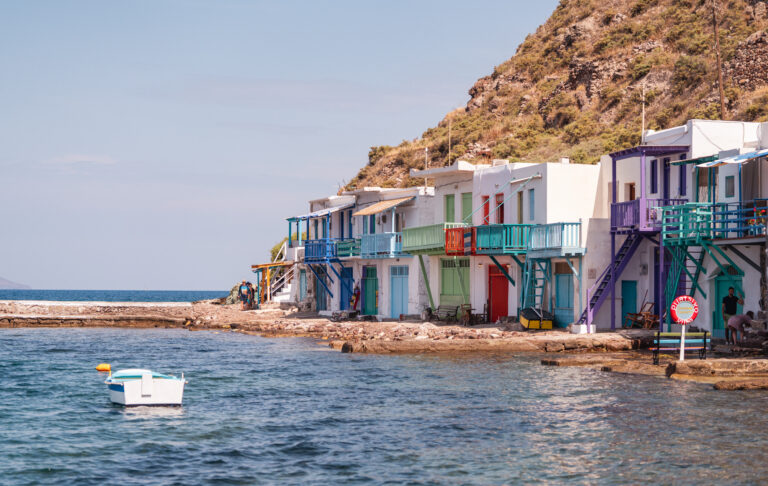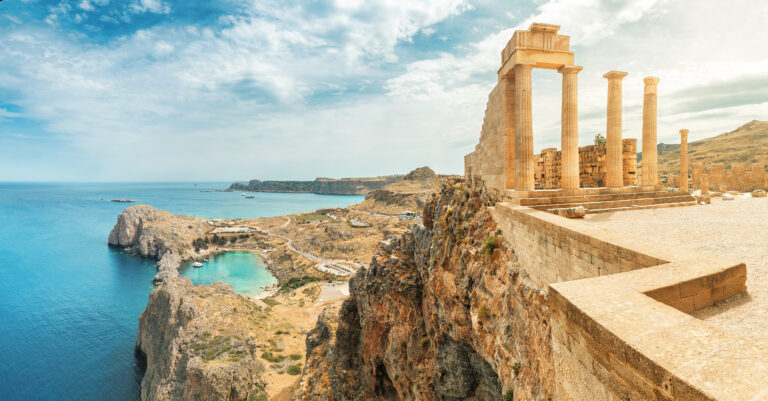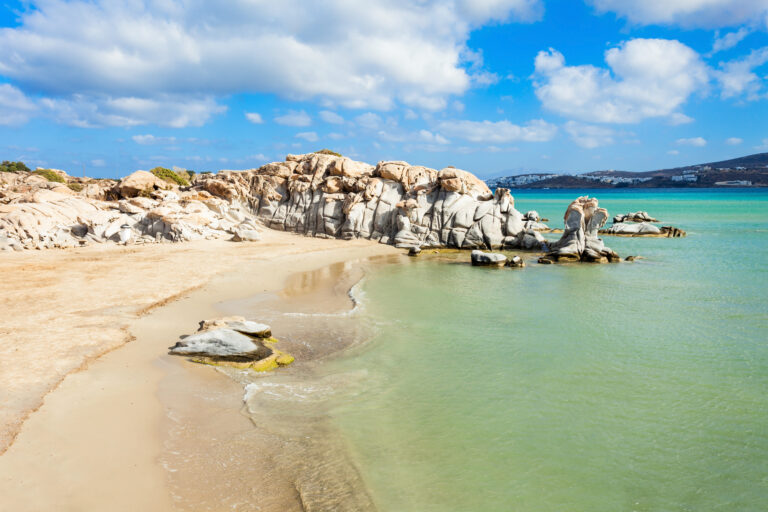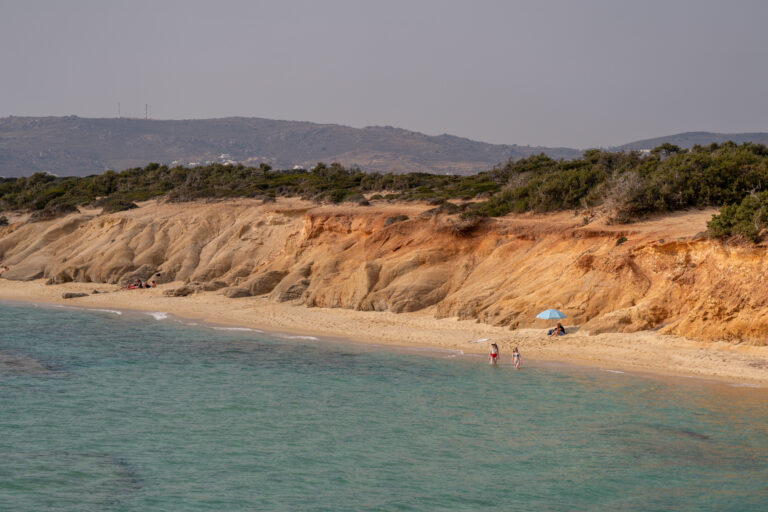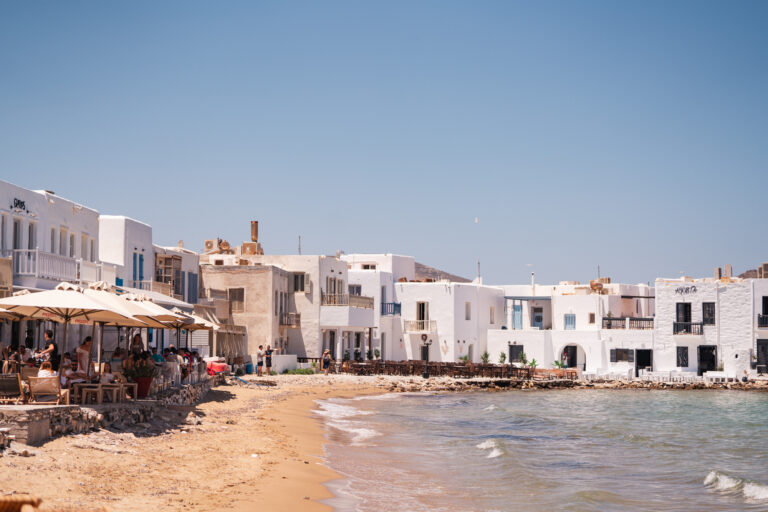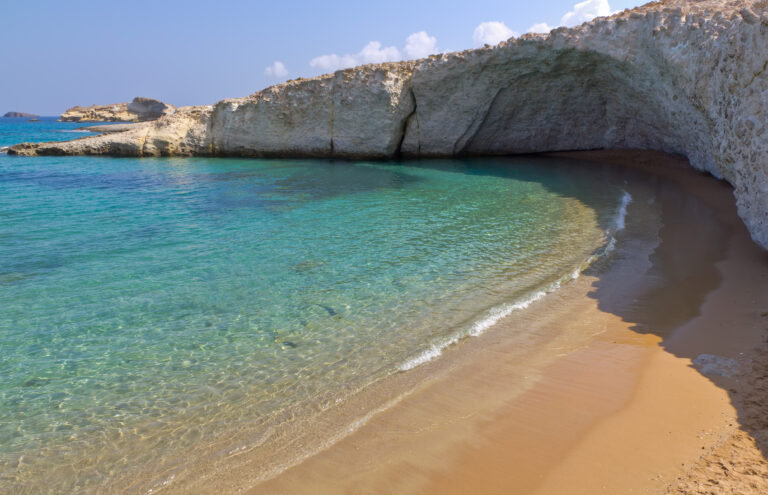Best Things to do in Naxos, Greece
On approach to Naxos by sea, you’re greeted with clusters of white-washed houses, and lush rolling landscapes sweeping down towards silken sands and clear turquoise waters.
This is a Cycladic island for relaxation and immersing oneself in history, a place where leisurely days are spent exploring centuries-old archaeological sites, hiking to the highest peaks, sun worshipping on powdery beaches or snorkelling with marine life.
In the evenings, sunsets are enjoyed with a glass of wine outside a picture-postcard Greek taverna, or from a spectacular hillside viewpoint.
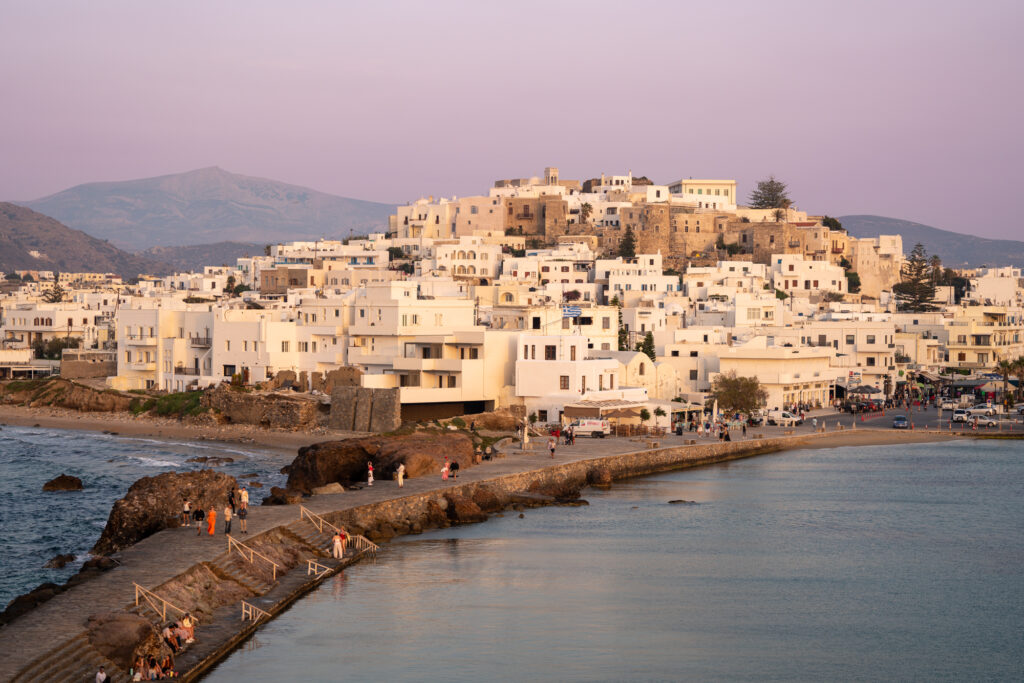
Is Naxos Worth Visiting?
The Greek island of Naxos is the largest of the Cycladic archipelago, located in the Aegean Sea, around 40 kilometres south of Mykonos and less than five hours by ferry from the capital Athens.
It’s a great place to stay for a few days or longer as part of a Greek island hop itinerary, and perfect for romantic couples or a relaxing family holiday. Singles seeking solitude can find accommodations by the beach and the overall vibe is low-key – suited to those who wish to immerse themselves in traditional Greek island culture.
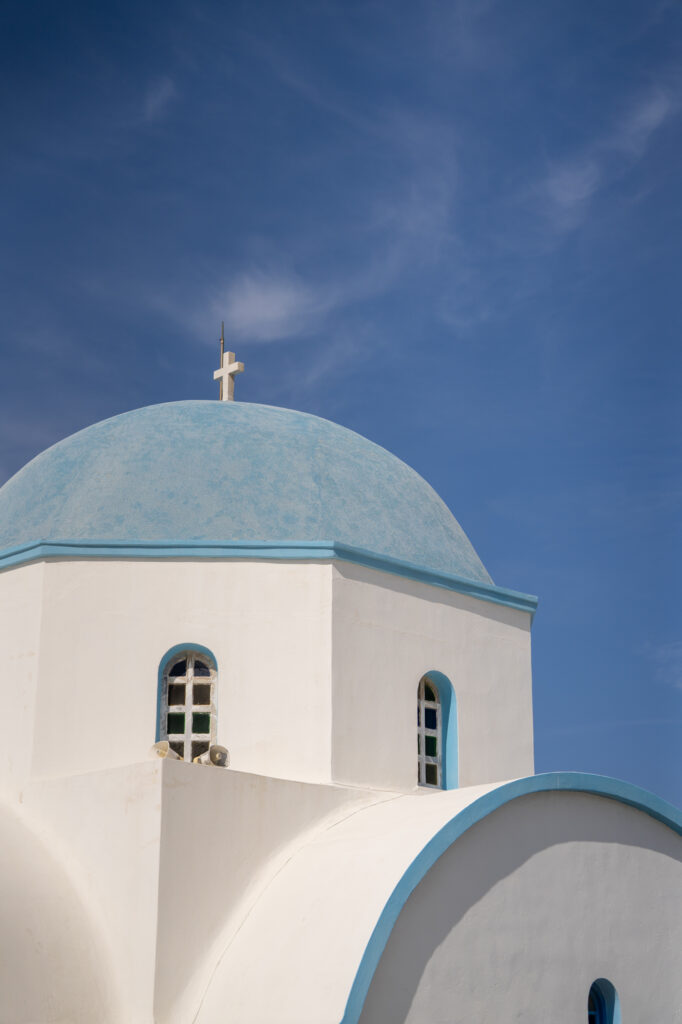
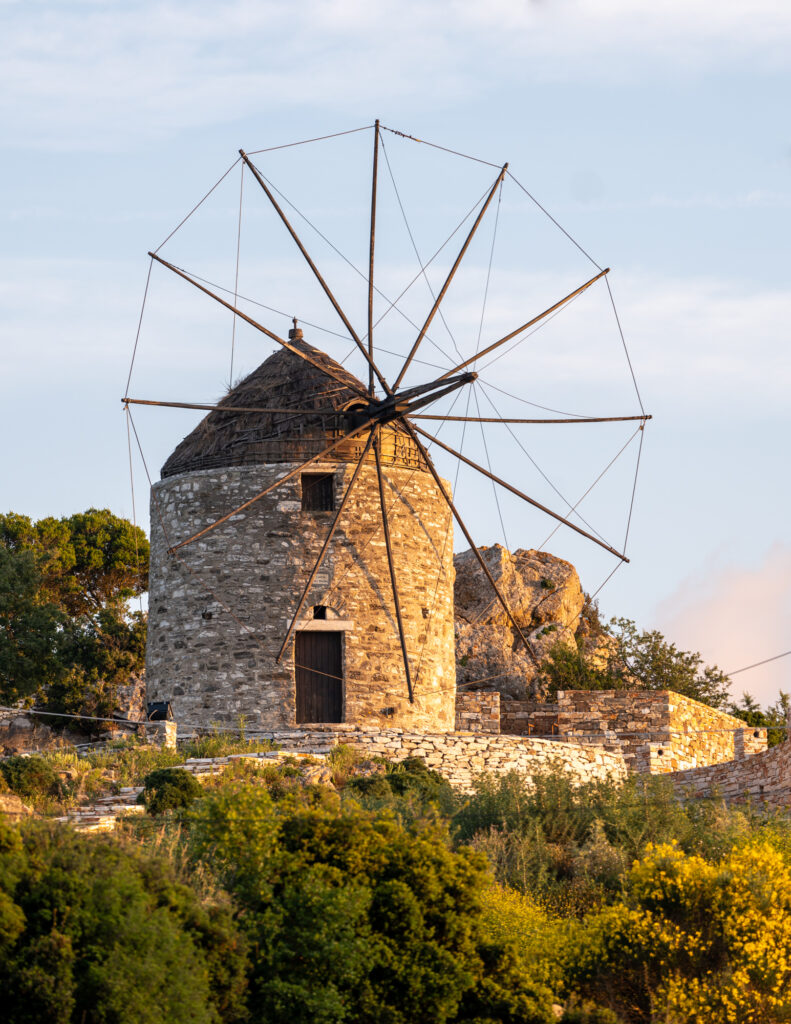
Naxos is all about good food and wine, beautiful beaches and discovering the island’s rich history. The best of Naxos includes quaint villages and towns steeped in tradition, scenic hikes and museums. Visitors can learn how to cook authentic Greek cuisine, visit a local distillery or cheese maker, and these are only a few of the top things to do on Naxos Island!
Arrive during the Easter break to see villagers breaking red eggs, walking reed-strewn roads, and enjoying lavish feasts of Greek cuisine, or pop to Moni, a pretty mountain village famed for its year-round loom weaving, wood carvings and textiles.
Best Places to Stay in Naxos
Although a fairly large island, you can still get to pretty much anywhere (except a few of the more remote beaches) within an hour or so of driving. So choosing where to stay doesn’t have to be based on logistics alone. Below, I’ve laid out a few accommodation options that I think are well-placed for a beautiful stay in Naxos (including where I stayed!).
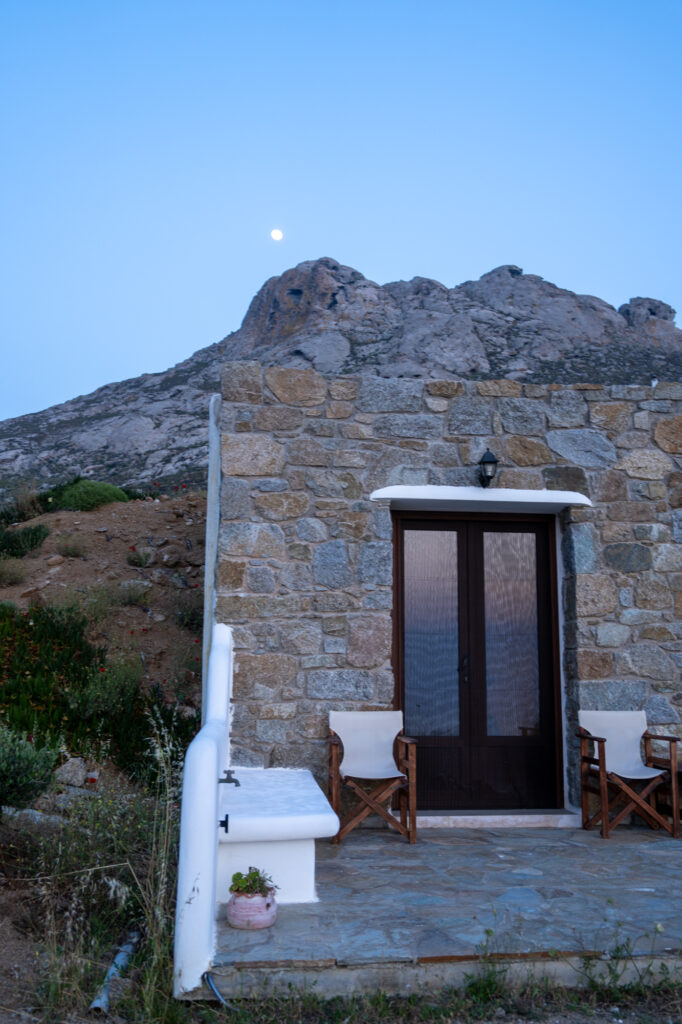
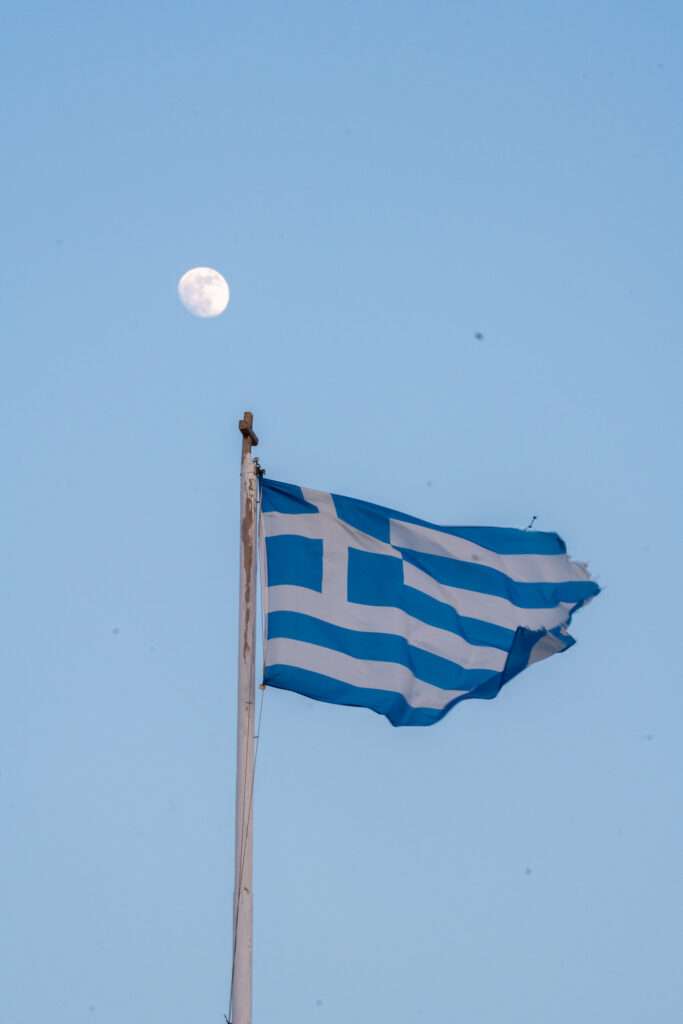
Finikas Hotel. Located near the sublime Alyko Beach, this 4-star hotel offers large sea-view rooms, a swimming pool, spa, and a restaurant. Several activities are on offer for active guests, including bike tours, cooking classes, windsurfing and more.
Avgoustos Suites Naxos. This accommodation near Naxos airport is ideal for a romantic getaway. Just steps from the gorgeous Agia Anna beach, you can spend your days swimming, snorkelling, or even learning to dive, before coming back and soaking in your own private hot tub with a view of the sea.
Casa Borealis. Those who wish to come home to a calm retreat at the end of a day exploring, need look no further than Casa Borealis. This self-contained accommodation offers an affordable option near Naxos Chora. The sea-view apartments are ideal for families.
Top Things to do in Naxos
There’s much to see and do on the island, so, without further ado, let’s take a look at the top attractions and activities you don’t want to miss while in Naxos.
Wander Around Old Town Naxos (Chora)
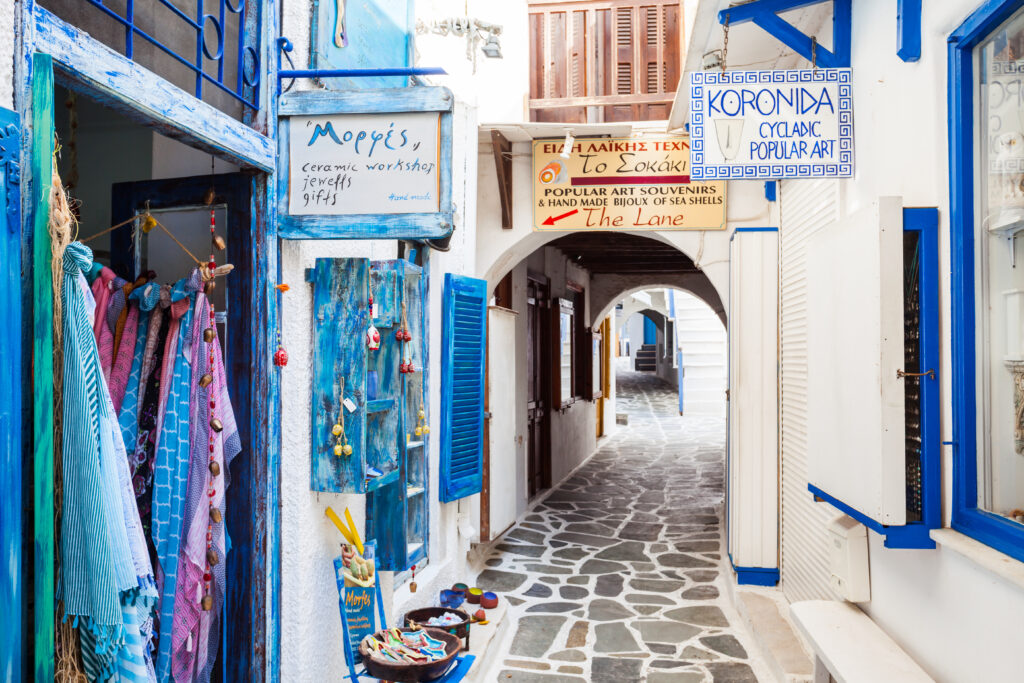
Naxos Town or Chora is one of the best places to visit in Naxos and the first town you’ll see as you step off the ferry. Traditional Cycladic white-washed houses line the harbourfront, and the town is topped by a 13th-century Venetian castle with an Archaeological Museum nearby.
Accessed via the causeway, Portara cuts a striking silhouette as it welcomes visitors to the island. The huge marble door frames the landscape as a dedication to the Greek God Apollo, and in the town itself, a maze of paved cobble lanes make way for buildings blanketed in fuchsia-pink bougainvillaea.
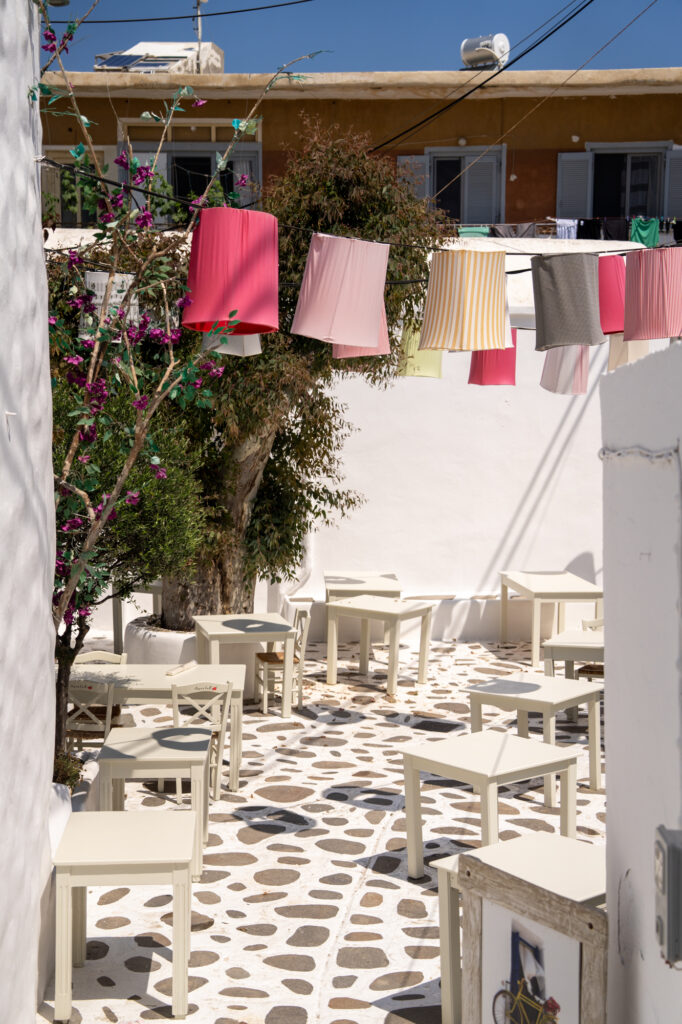
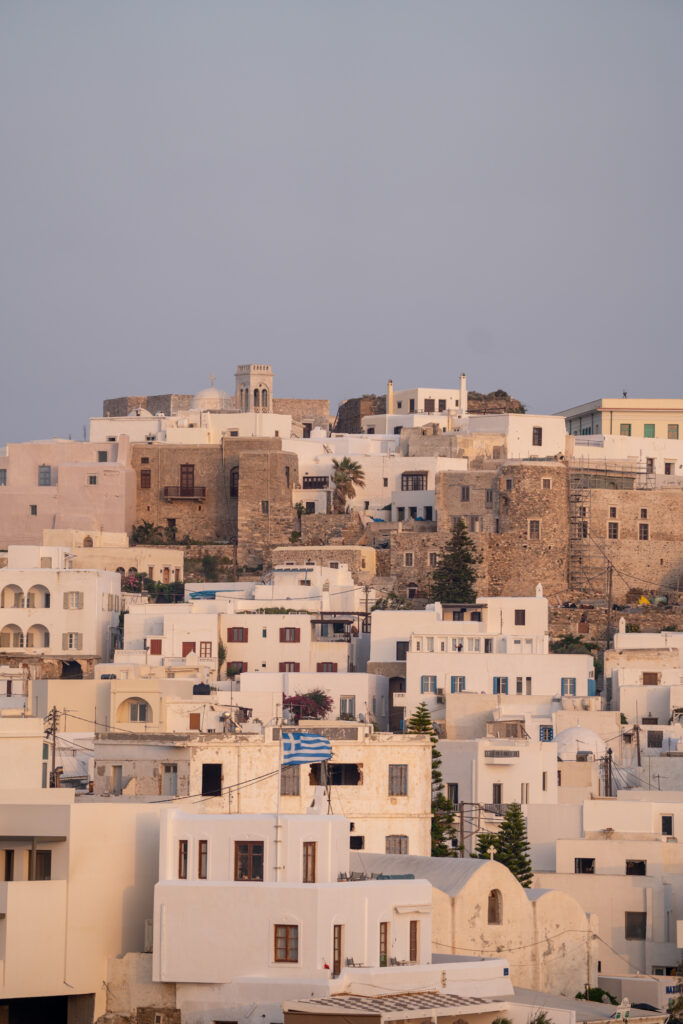
Visitors can browse myriad craft shops and art galleries (pick up some Naxos soap and ouzo-flavoured candy), pop into a family-run taverna for mezze or marvel at Byzantine-era churches.
Be sure to seek out the Old Market within the town’s streets, for this is where you’ll find some of the most charming stores and restaurants tucked between the narrow cobbled lanes.
Alternatively, relax on nearby beaches, watching fishermen as they return on their painted boats after a morning at sea.
Relax on Beautiful Beaches
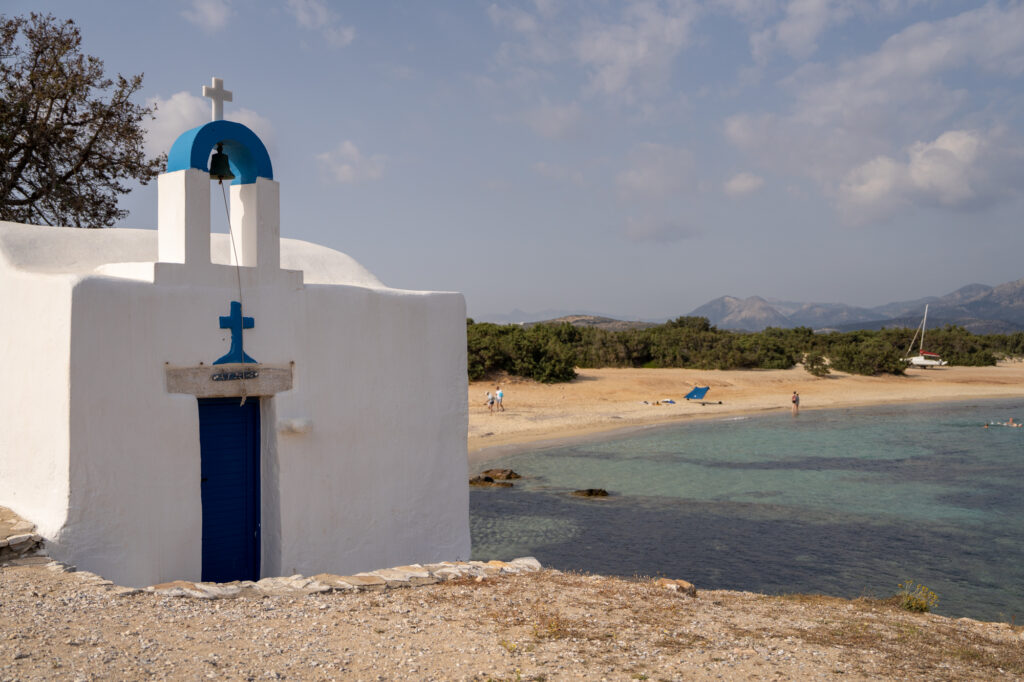
The beaches of Naxos cater to all tastes – those to the west of the island consist of manicured powdery sands and offer activities, while those to the south and east are unspoilt and wild– perfect if you’re seeking peace and tranquillity.
If you’re travelling to Naxos with kids, Agios Georgios beach is ideal, with shallow waters for swimming, nearby tavernas for lunch and a water sports centre. Another hit with families is Agios Prokopios Beach – easy to access by bus from Naxos Town during the summer season or try Pyrgaki Beach, also ideal for younger children, but within a quieter environment.
One of the best beaches on Naxos (if not all of Greece) is Plaka Beach on the western coastline. It boasts four kilometres of golden sands and there are hotels, restaurants, and beach clubs for snacks and refreshments.
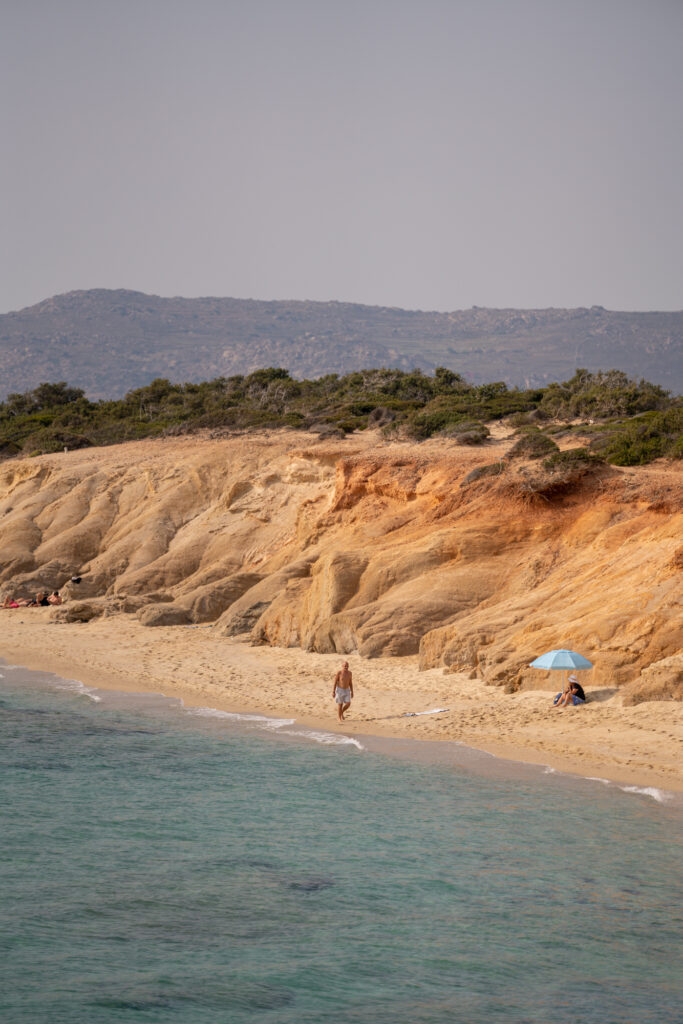
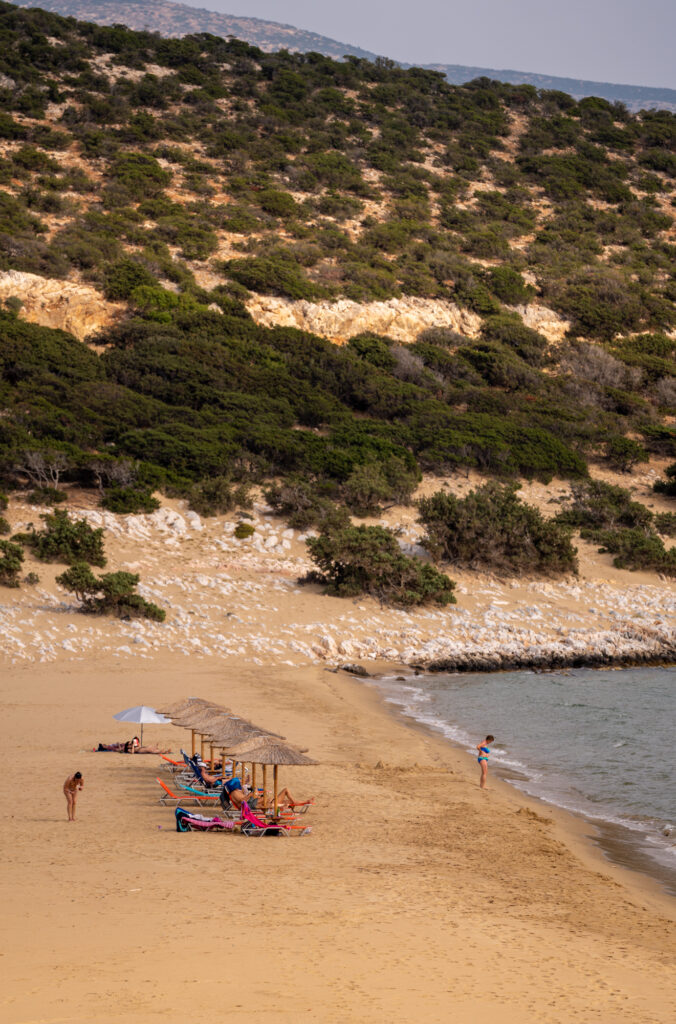
Water sports enthusiasts will enjoy catching some waves at Mikri Vigla Beach – a spot perfect for kitesurfing and windsurfing.
For a more scenic beach experience, take your camera and a picnic to Aliko (Alyko) – where a small group of beaches sit nestled aside a cedar forest. Here, you’ll also find an abandoned hotel turned open-air graffiti museum, ideal for Instagram shots, and if you like to bathe au naturale, there’s a small naturist beach nearby too.
Discover Ancient History at Naxos Castle (Kastro)
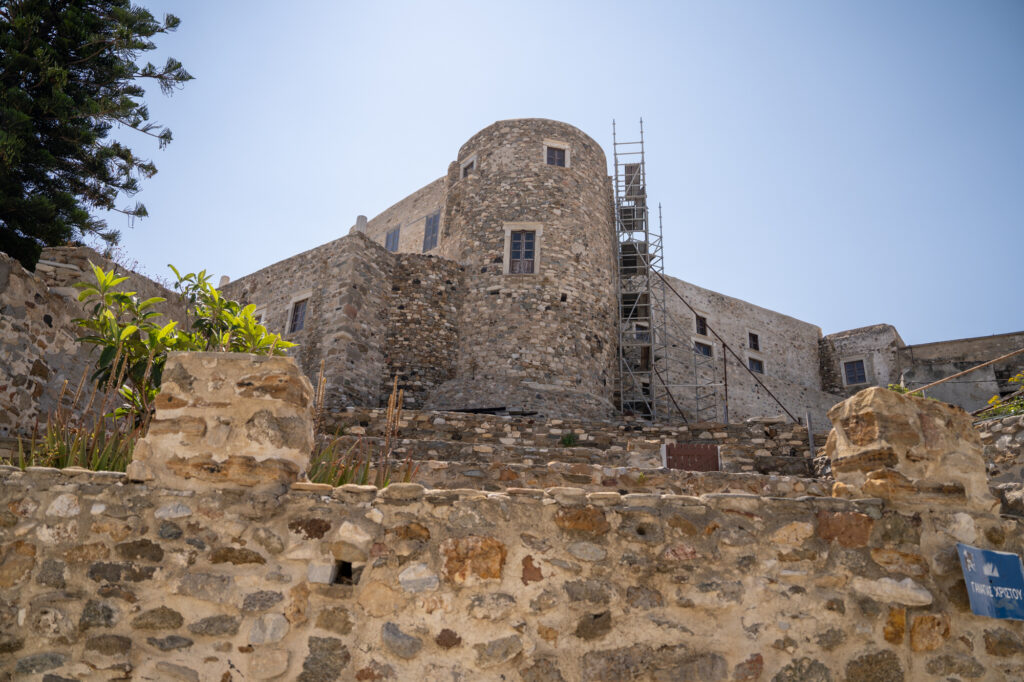
Although briefly mentioned earlier, Naxos Castle or Kastro is worth a separate section as it’s one of the best Naxos places to visit. The 13th-century castle was built on the instruction of Marco Sanudo when the Venetians ruled the island and had sovereignty of the seas.
During this era, the castle was used as a defence to deter potential invaders, however, it was later used as a centre for education, religion and politics.
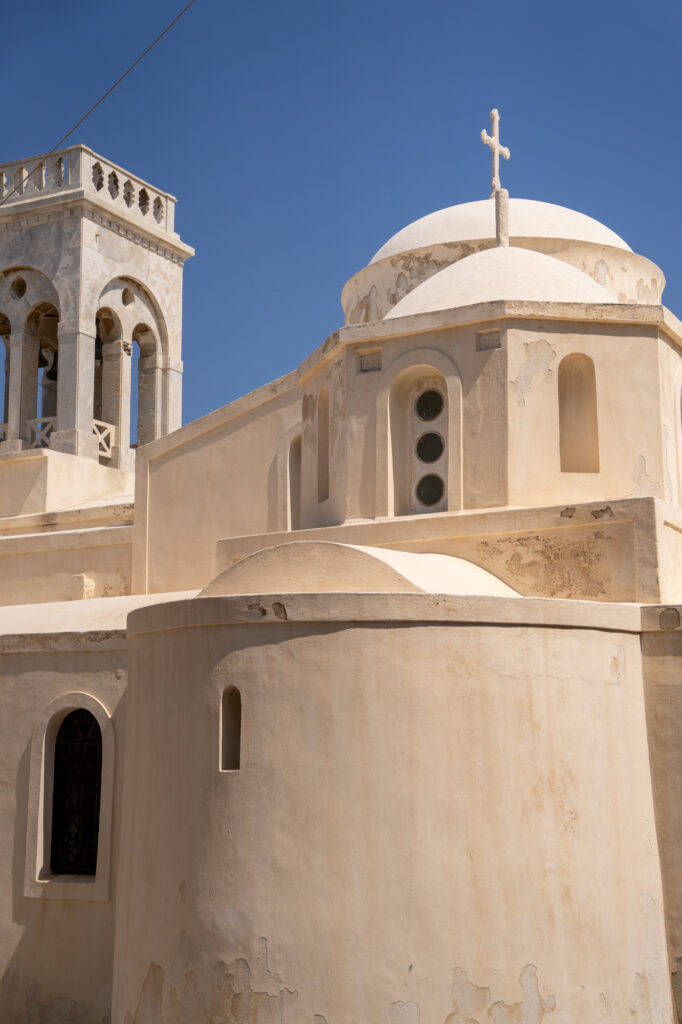

Many sections are still open to the public including a cathedral, school and the Archaeological Museum, the latter housed in a 17th-century building. The museum boasts excavation findings from the island with interesting collections of gold jewellery, Mycenaean pottery and marble statues.
The Museum also has stunning views of the town below, and there is a café where visitors can enjoy a drink or snacks alfresco while overlooking the Aegean Sea and coastline.
Discover the Temple of Demeter
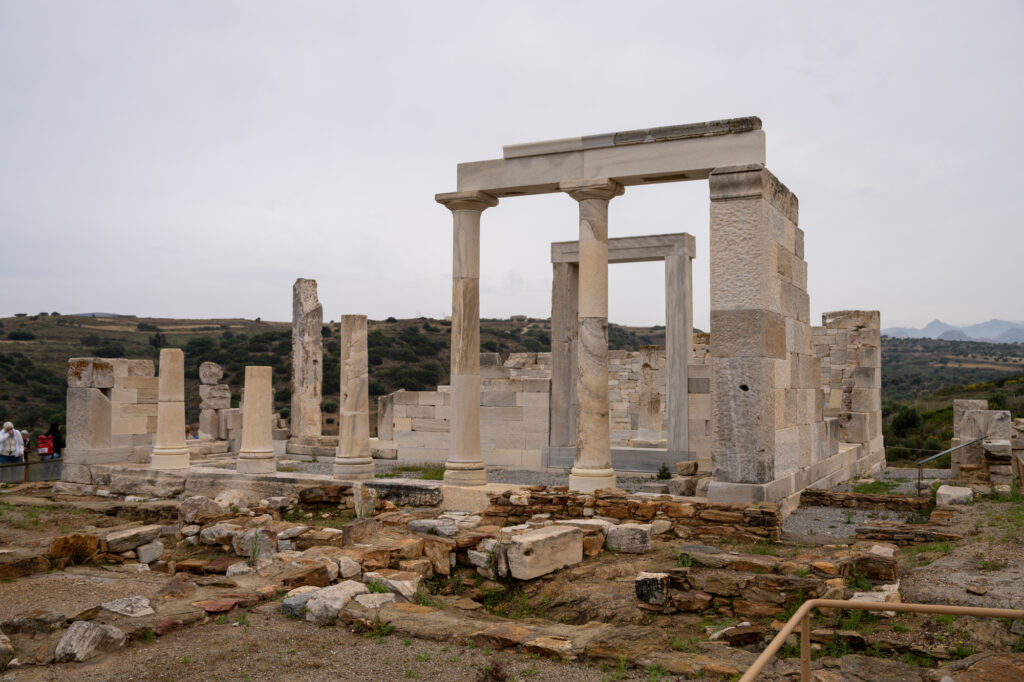
Flanked by rolling green hills and fertile lands near the village of Sangri, the remains of the Temple of Demeter rise from the earth – a 6th-century marvel crafted from marble, glistening in the sun.
The temple was built as a dedication to the Olympian goddess of grain, harvest and fertility and served as an open-air religious centre during the Mycenaean period. Its original architectural style, with columns, etchings and a roof, was said to have influenced the Parthenon build in Athens.
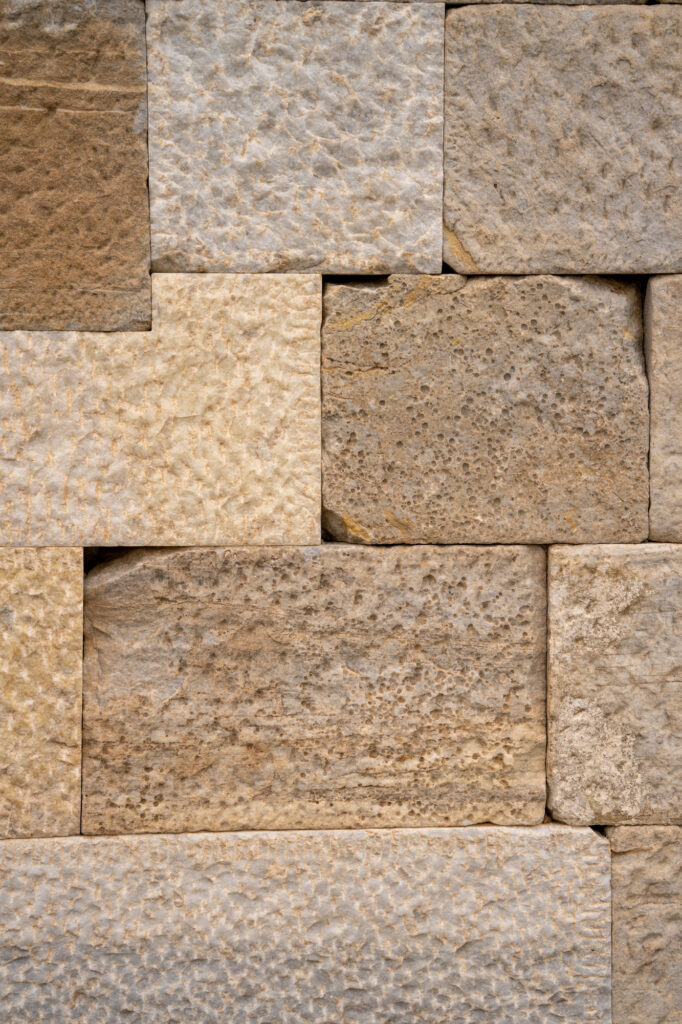
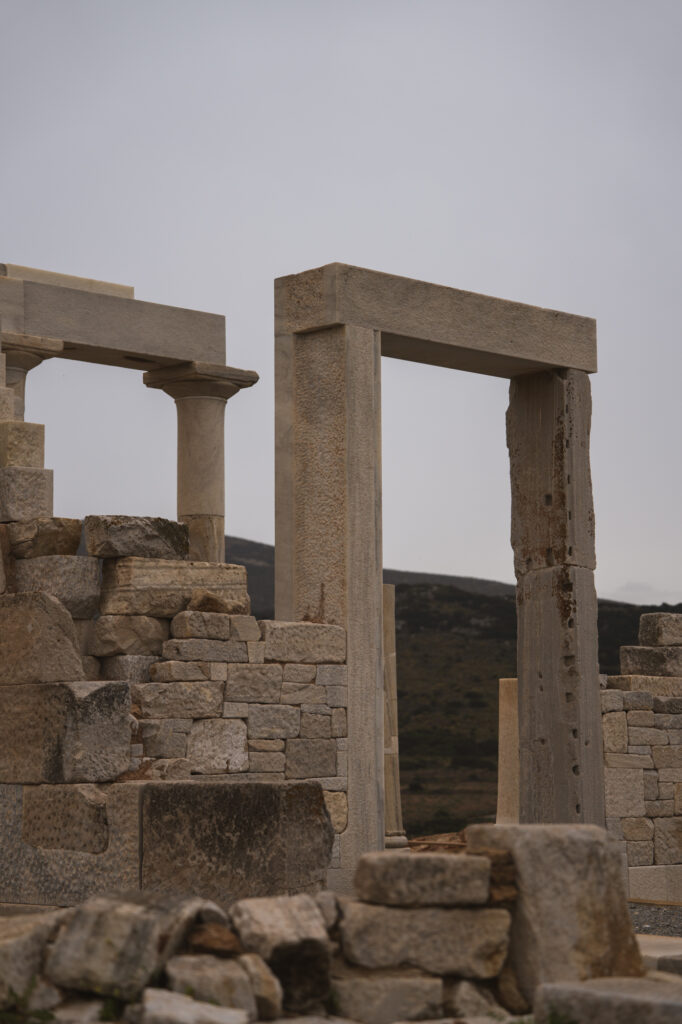
Today, although the entire temple structure no longer remains, one can still get a sense of what it was like to be in this space all those centuries ago.
Take a seat on the grass at one of the island’s best archaeological sites, looking up at the Naxian marble in wonder and imagine the characters who visited here when it was a bustling temple of the Gods. Afterwards, take a browse at the onsite museum which hosts some fascinating finds from the site.
Do take note of the opening hours when visiting to avoid getting caught out like I did initially! It closes mid-afternoon and there is no access on Tuesdays.
Hike to Mount Zas
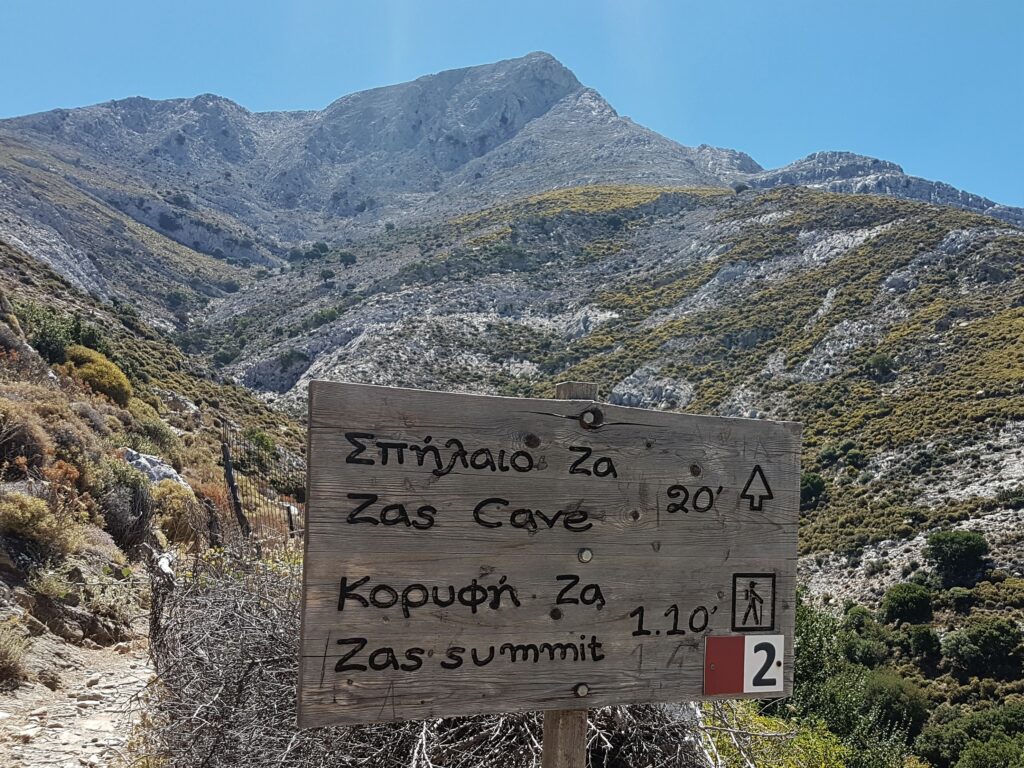
The highest mountain of the Cyclades, Mount Zas, is according to Greek mythology, where Zeus spent his formative years.
This trail is one of the best hikes in Naxos, but it can be pretty strenuous if you’re not used to steep climbs, therefore, it’s probably unsuitable for younger children.
There are two ways to reach the top. The easiest route sets out from Aria Spring near the pretty town of Filoti, embedded between lush forested landscapes and mountains. This hike takes around two to three hours covering five kilometres at a relatively steep elevation (yes, this is the easiest route)!
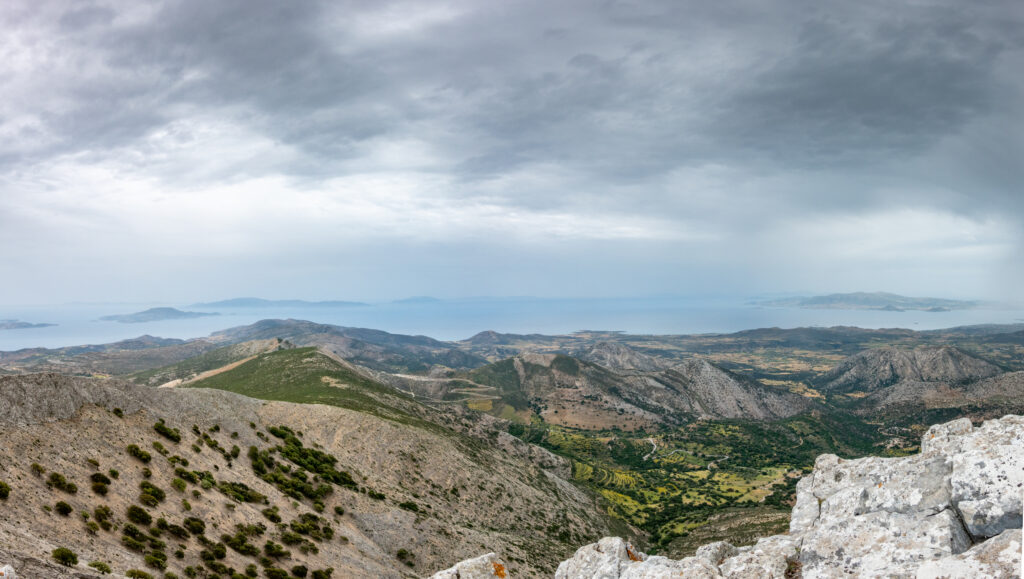
Trekkers can pause at Aria Spring to sip the natural spring water from the fountain (bring a bottle with a built-in filter) and spend time soaking up the beautiful views before continuing along the trail.
Outdoor enthusiasts wishing to explore the mysterious Cave of Zeus en route should remember to bring a flashlight and it’s wise to set off early to avoid the heat of the midday sun on your ascent. The panoramic views of Naxos from the summit of Mount Zas are well worth the hike, but snacks and comfortable shoes are a must!
Drive to the Picture Postcard Villages of Naxos
Dotted between fertile valleys, rolling mountains and beaches, the white-washed villages are a must-see in Naxos.
The best way to see such villages is by hiring a car. Most visitors begin their island exploration in Naxos Town, and from here, one can drive north, south, or east to begin an island discovery.
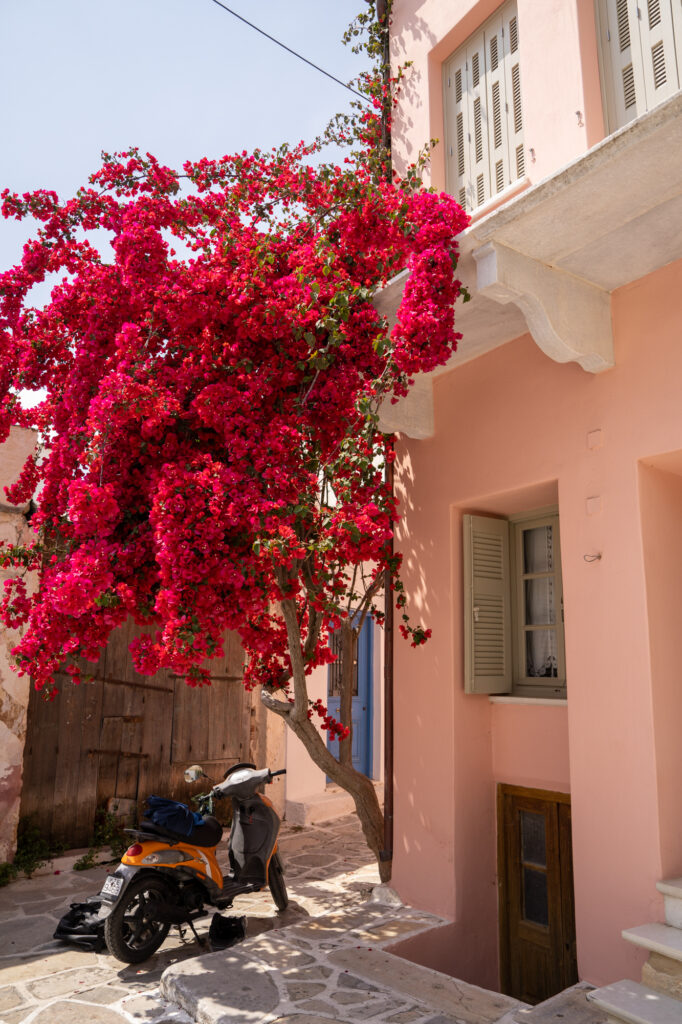
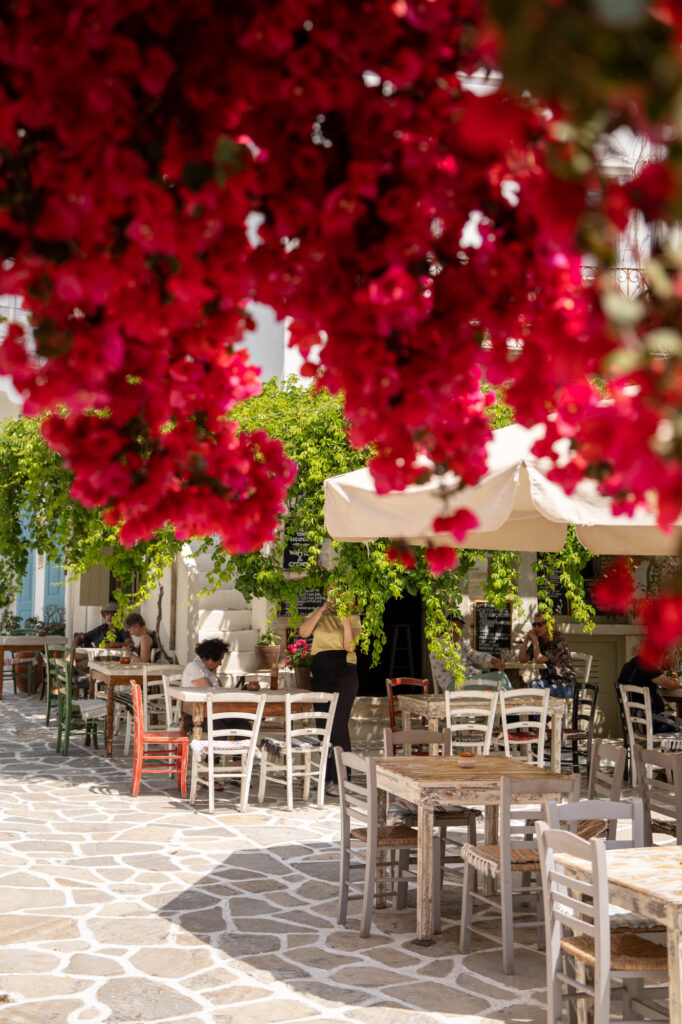
One of the best mountain villages to visit in Naxos is Halki (also spelt Chalki), a typical Cycladic village famed for its olive cultivation. The village streets and squares are punctuated with Neo-classical buildings and Byzantine churches with age-old frescoes inside. Pretty cafes line the centre, and visitors can sample the potent Naxian liqueur made from the leaves of the Citron tree.
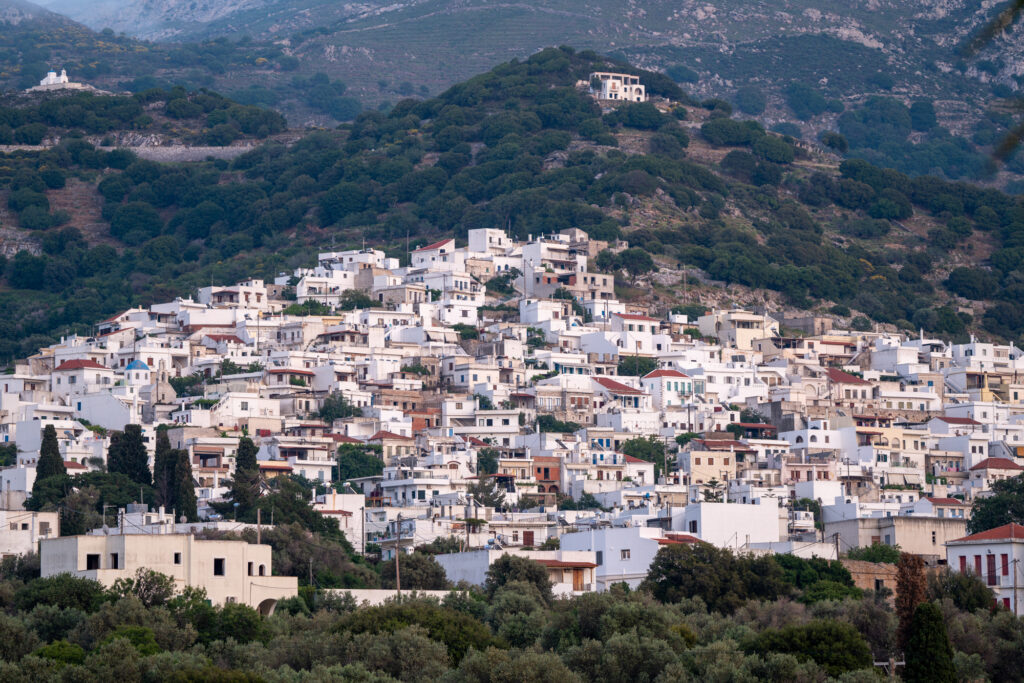
Nestled on the slopes of Mount Zas, the village of Filoti is a woven patchwork of white houses amidst a sea of olive groves and hills. In the heart of the town, locals enjoy their morning coffee and tourists flock to sample Greek cuisine in the numerous tavernas. The streets are bedecked in flowers and plants and there’s an interesting Ecclesiastic and Folklore Museum to explore.
Afterwards, head north to Koronos, a pretty village of white houses with colourful shutters hemmed in by emerald hills. The stepped alleyways lead to old churches, charming tavernas play live music and visitors can learn about the emery mining industry that once thrived here.
Visit the Portara
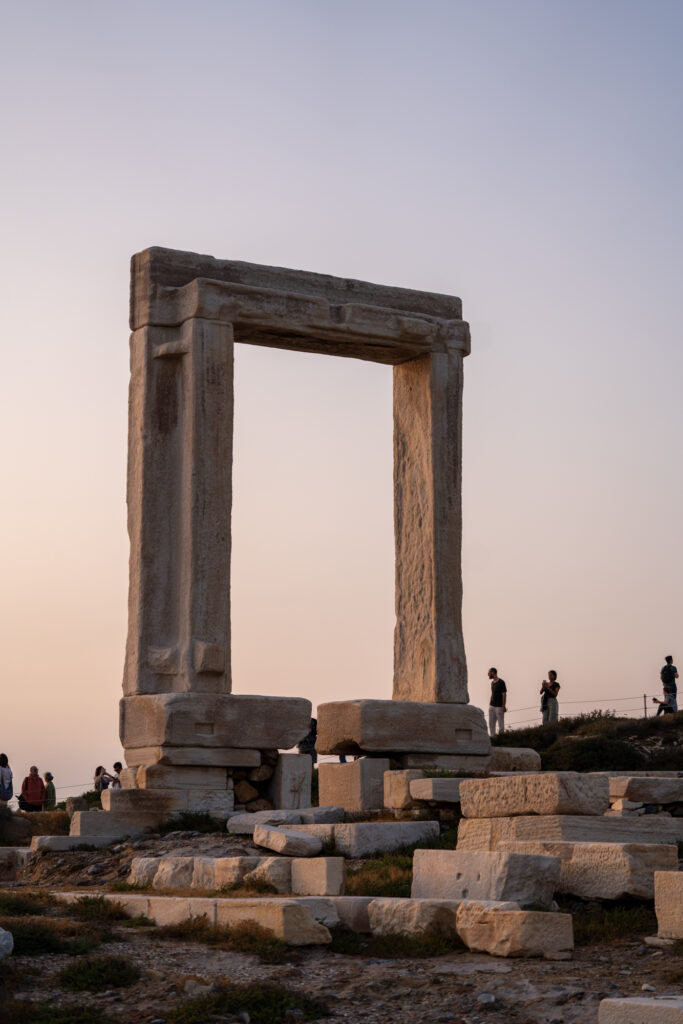
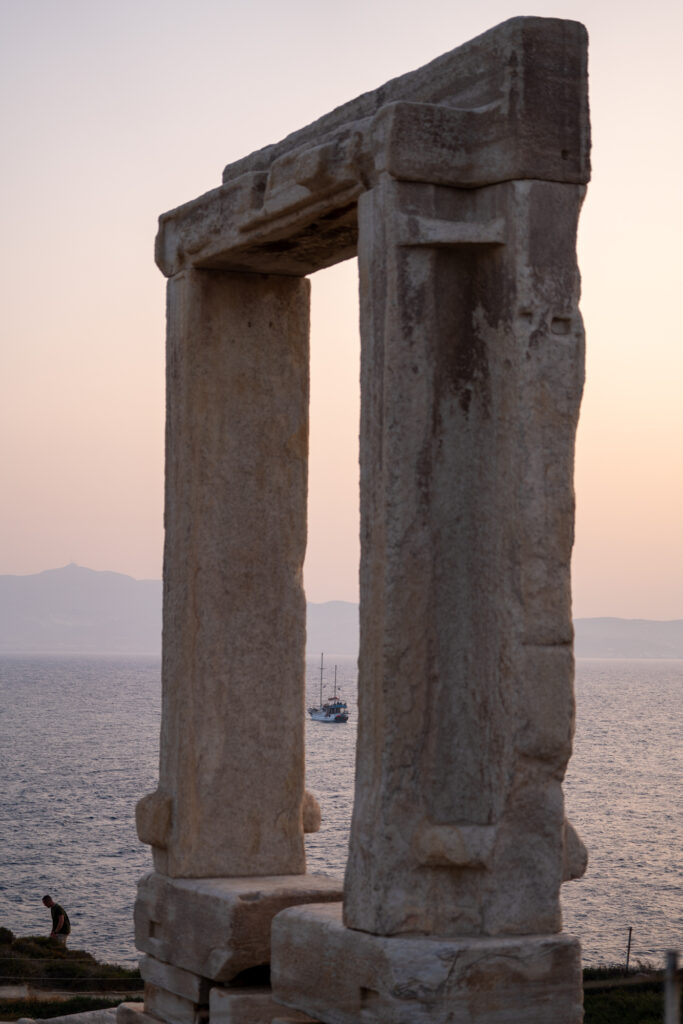
A jewel of Naxos Island is the huge marble Portara that stands on the peninsula overlooking the azure blue Aegean Sea and Naxos Town.
The original 6th century B.C. temple is one of the top things to see in Naxos. It is said to have been dedicated to the Greek God Apollo and built to face the island of Delos from where he came. However, other myths have intimated that it was constructed to honour Dionysus, the God of wine.
The temple of Apollo was never completed, and much of the marble structure that remained was taken by the Venetians to construct the castle and other landmarks. Fortunately, the marble doorway was too heavy for them to move, weighing around 20 tons!
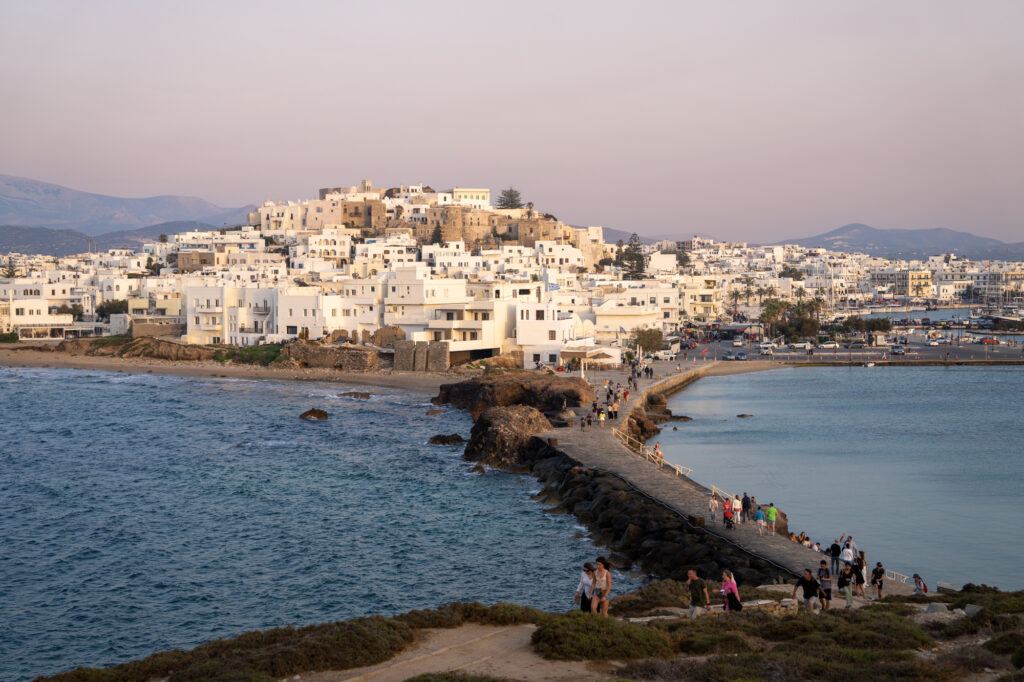
Today, the Ionic doorway greets incoming visitors to Naxos. Venture here just before sunset with your camera for some incredible photo opportunities of the illuminated Naxos Town and the coastline.
Enjoy a Day Trip
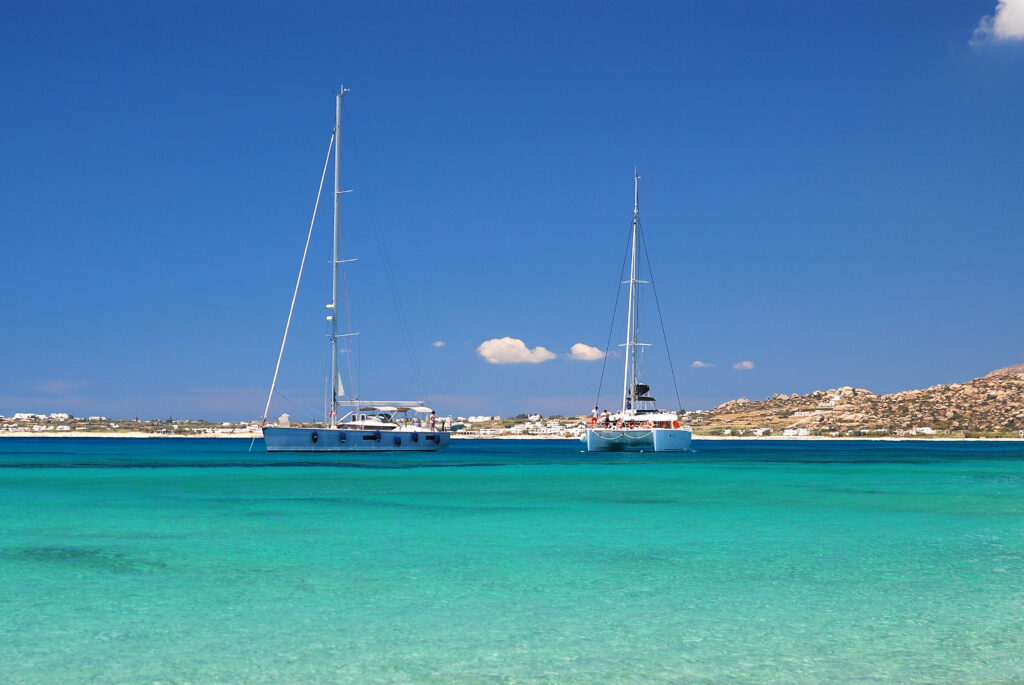
If driving in a foreign land is not your thing, there are a multitude of Naxos excursions and day trips to be taken to explore the island and beyond.
Enjoy a full-day sailing excursion to Koufonisia (a beautiful unspoilt group of islands) close to Naxos. On this trip, you’ll have the opportunity to capture the coastline, wander through quaint villages, go hiking along rugged trails, observe dolphins in their natural habitat or stop in a crystal-clear bay to swim and snorkel.
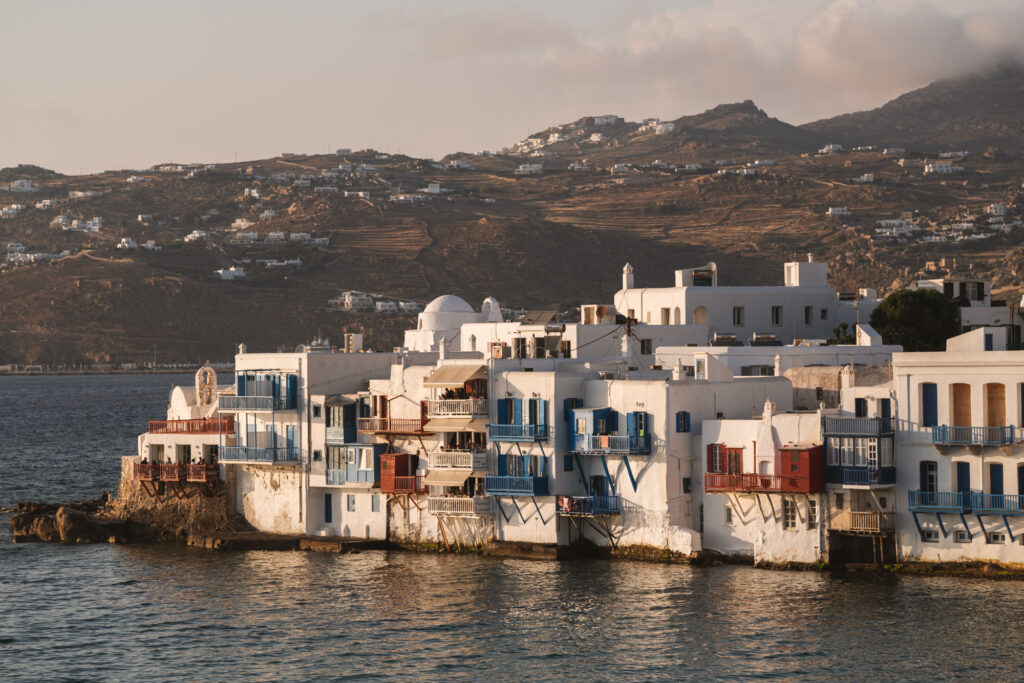
Other popular day trips operate to picturesque Paros or the lively island of Mykonos with its historic hillside windmills and romantic waterfront houses of Little Venice. The Mykonos excursion can also include a visit to the uninhabited UNESCO World Heritage Site of Delos – home to centuries-old frescoes, ancient ruins and a fascinating museum.
Those preferring to stay on terra firma can partake in a cultural food tour of Naxos or navigate island routes on an e-Bike, taking in remote churches, olive trees and pretty interior villages.
Sample Kitron Liqueur at Vallindras Kitron Distillery
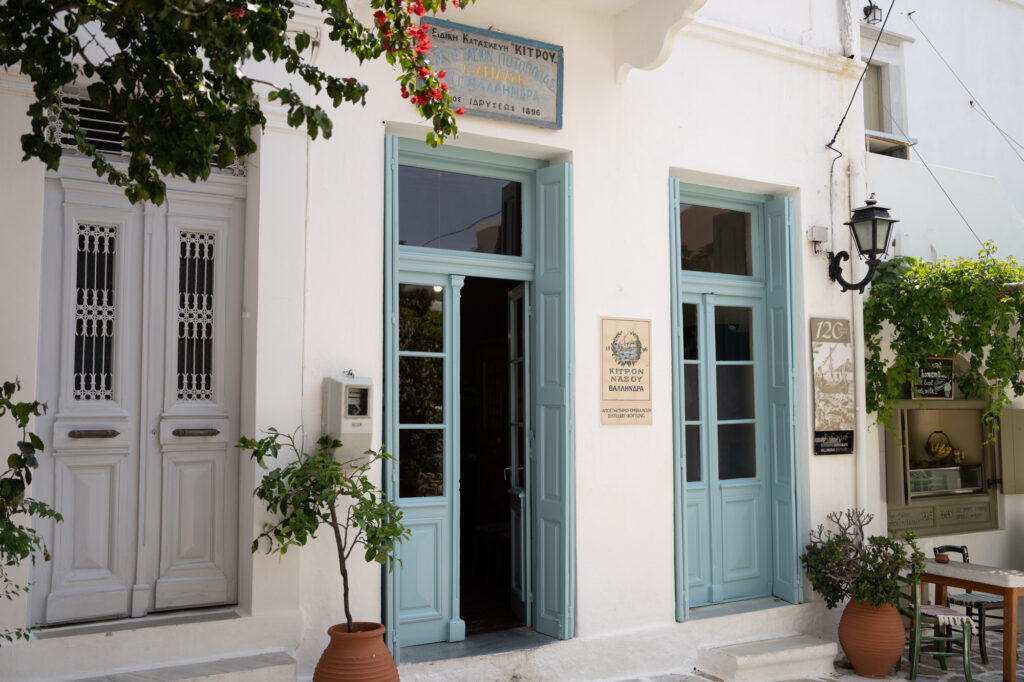
Kitron liqueur is made from the leaves of the citron tree, found in the interior of Naxos. The cultivation of these trees dates back to the 17th century, and even today, the leaves are purified in traditional copper stills.
Visitors interested in learning about the process can do so, and sample the liqueur, at Vallindras Kitron Distillery in Chalki (Halki).
The distillery and its owners continue to keep the tradition of liqueur production alive, and in recent years the drink has become the primary product of Naxos.
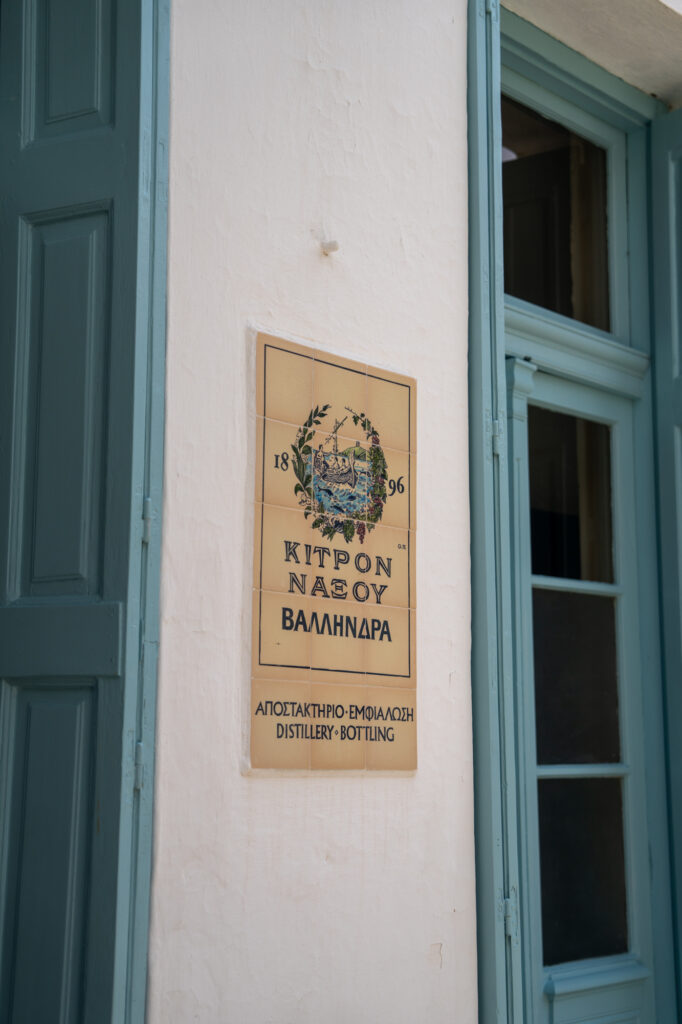

You’ll find the distillery hidden along a narrow lane in the village. Step inside to visit the tasting room and see bottles with different versions of the liqueur stacked upon shelves.
The drink comes in yellow, white or green colours and each has varying alcohol and sugar content (Note: yellow is the strongest but has less sugar), then see the old copper stills at work and learn how the popular drink is made.
The tour offers a fascinating insight into island trade and production, plus, you get to sample a glass or two and meet the owners.
See the Kouroi of Flerio Statues
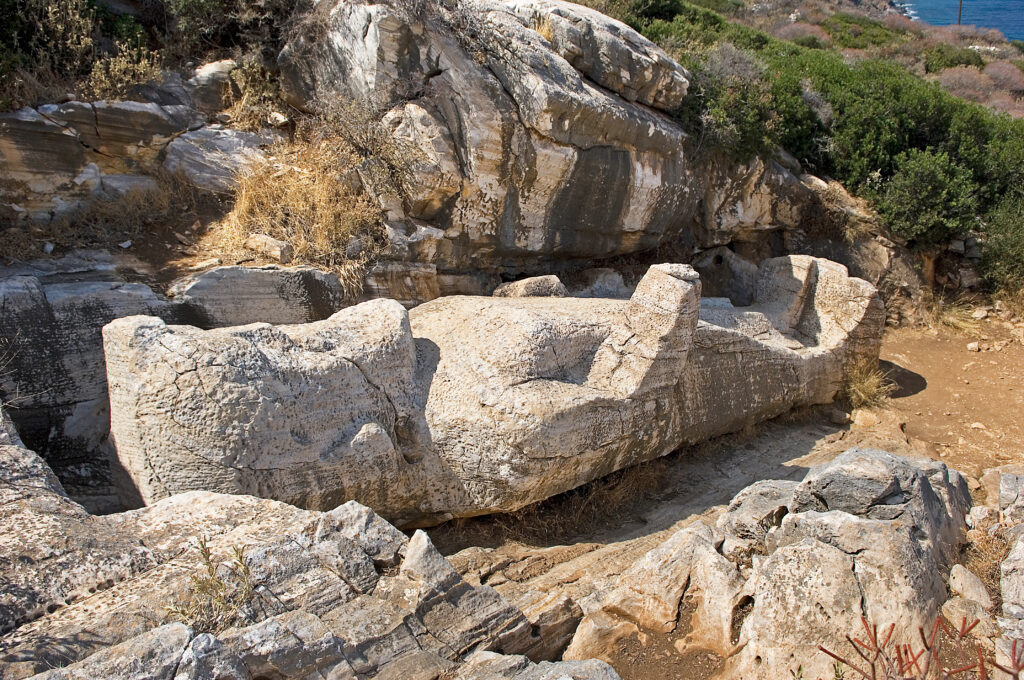
Several Naxian marble statues are dotted across the island known as Kuoroi of Flerio dating back to the 6th century B.C. The main gardens and quarries in which to see the unfinished statues are near Melanes, the oldest island settlement on the island, and also near Apollonas. Their sizes range between five to 10 metres high and they can weigh up to 80 tons.
The figures were worked on by ancient stonemasons with rudimentary tools, but they are well-preserved, offering insight into the ancient world and their crafting capabilities.
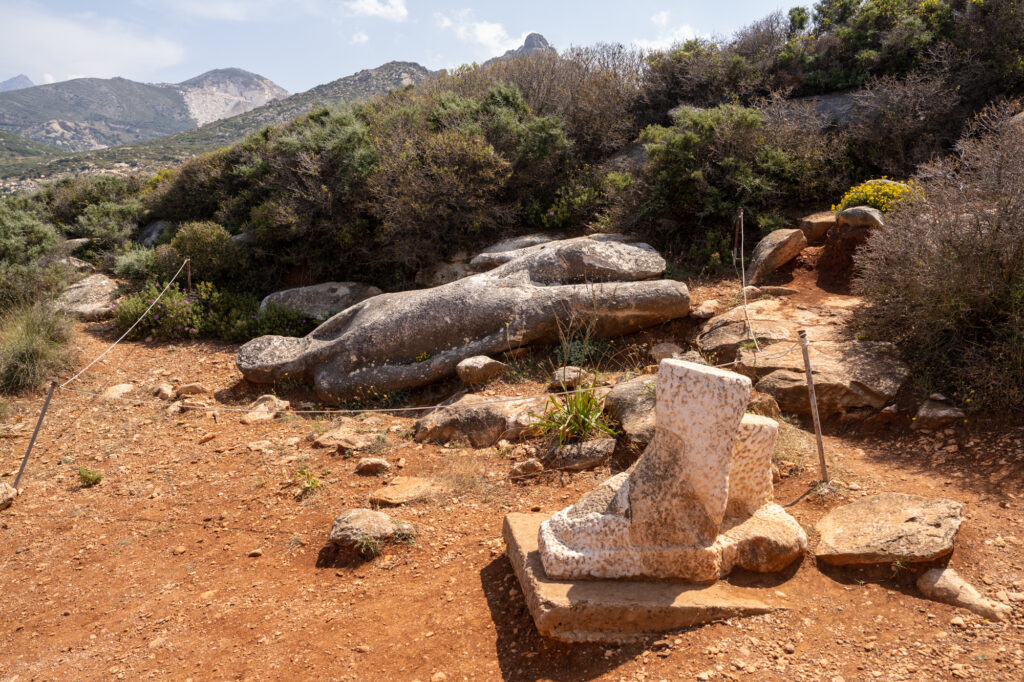
There are many stories attached to the Kuoroi, including that they were destined for the mainland, yet damaged in transit or too heavy to move, therefore left in locations around Naxos. Another story is that the owner could not pay to have the statues finished.
There is no evidence to support either story, but the statues are impressive feats of early engineering, with a mystery attached that entices one to see them.
Watch the Sunset at Rotonda
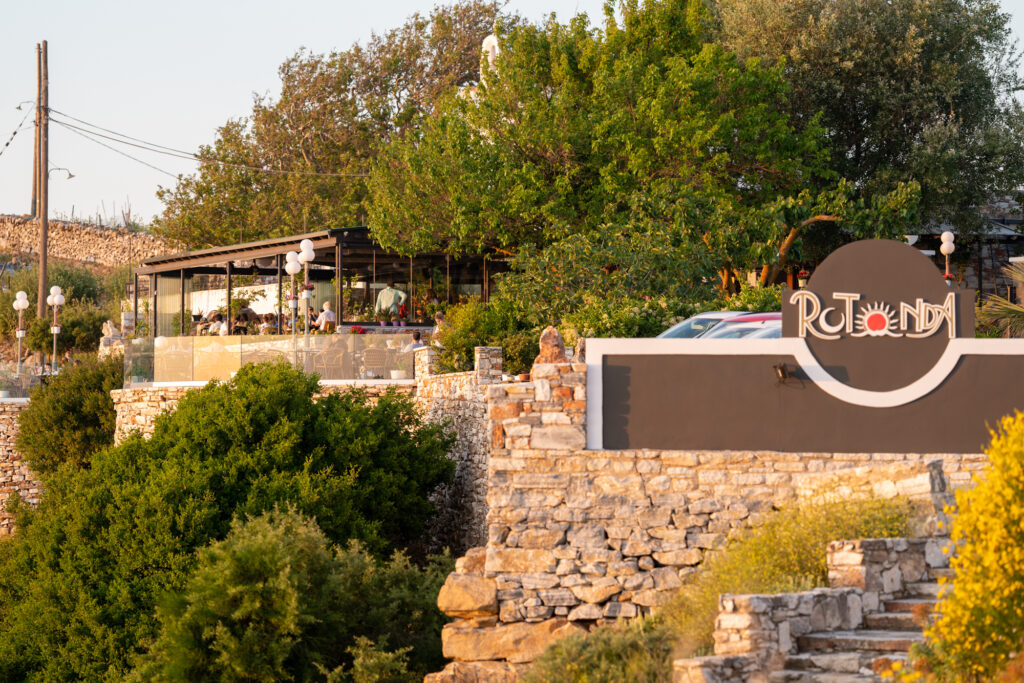
Looking for the best sunset views in Naxos? You’ll find them at Rotonda, alongside a helping of delicious local fare. Perched near the highest part of the island, Mount Zas, the restaurant benefits from endless views across undulating valleys and out to the Aegean Sea.
Reserve a seat on the large outdoor terrace and you’ll be in awe as the landscape changes before you at dusk. Tuck into specialities such as Mousaka, Soutzoukakia, and feta dripping in honey, followed by sweet wine or decadent dessert.
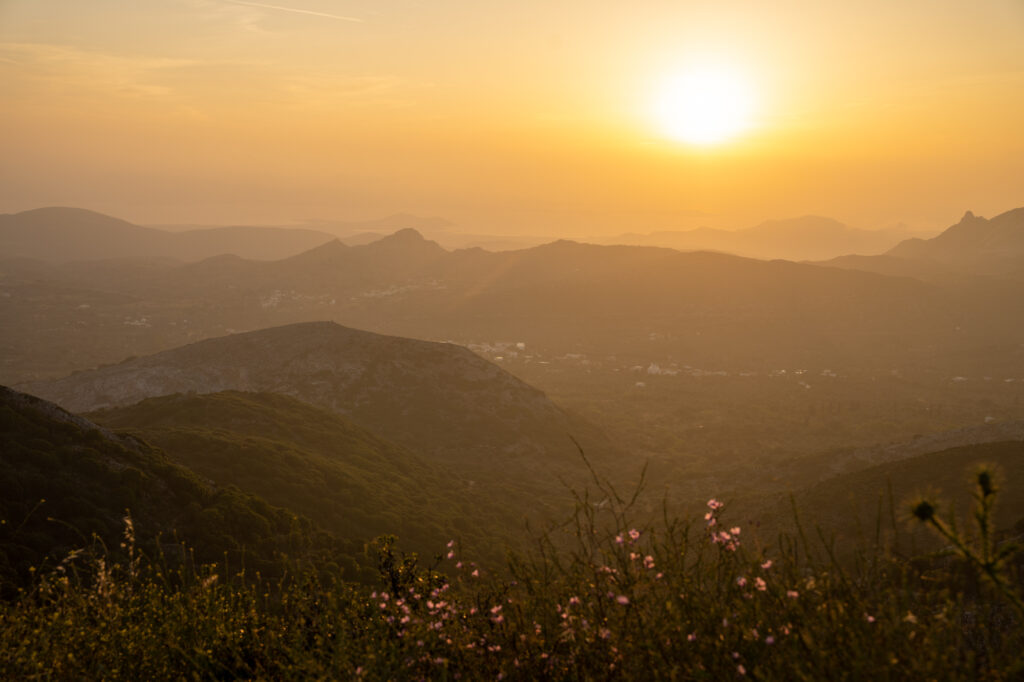
If you don’t fancy dinner, simply call in for a drink, or alternatively, find a perch at the nearby Saint Irene church and watch nature’s show from a unique vantage point instead.
Spend a Day at Alyko Natural Reserve
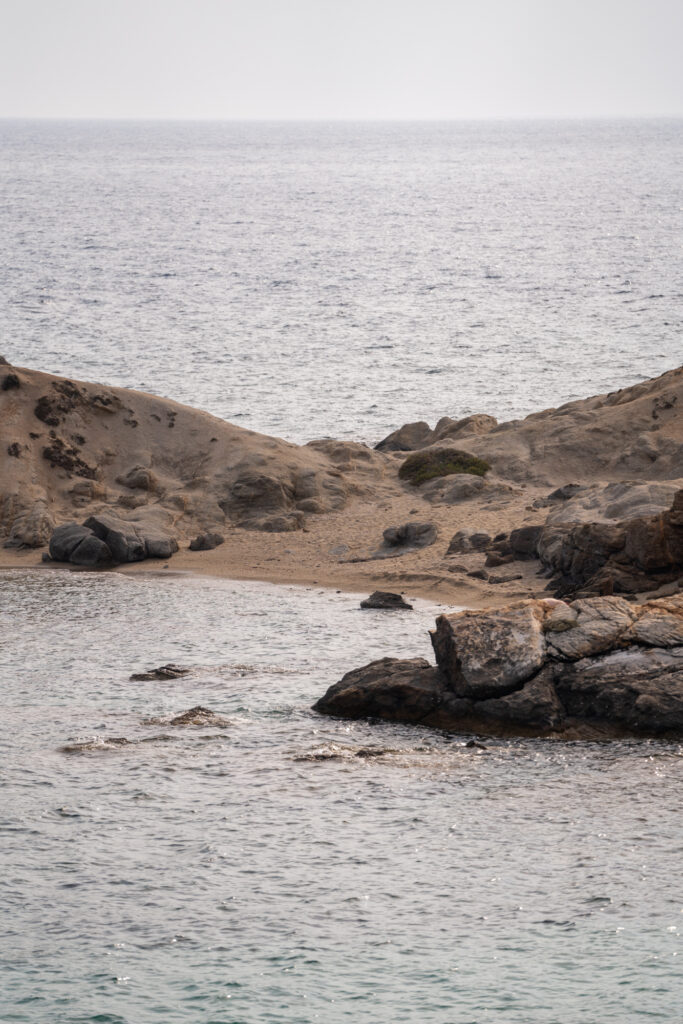
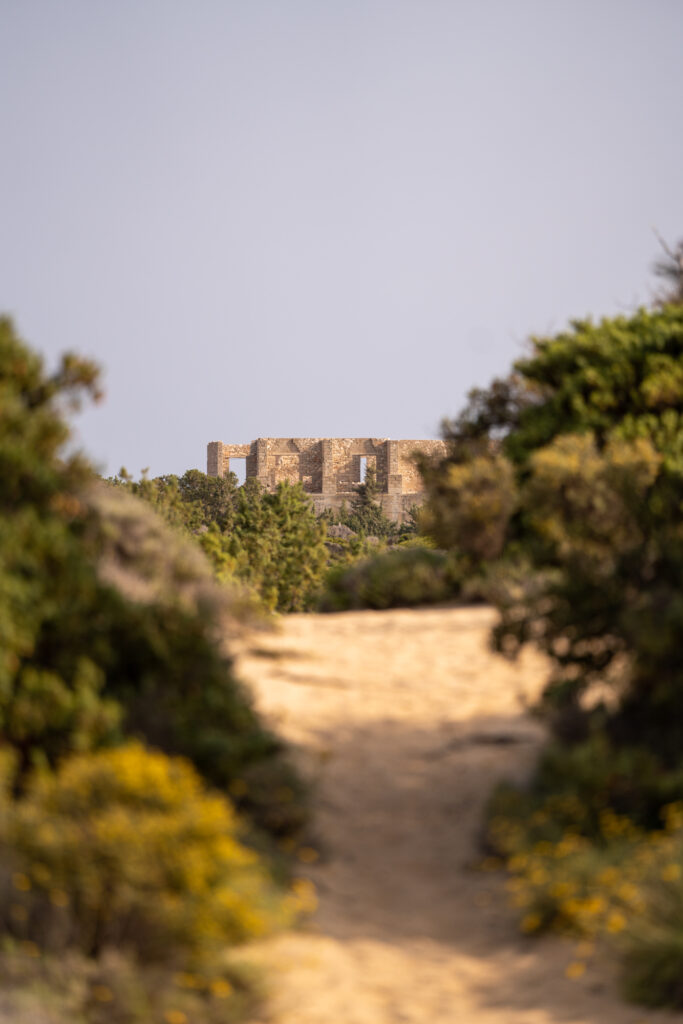
The natural peninsula of Alyko (Aliko) sits in the southwest corner of Naxos – an area of natural beauty with undulating golden sand dunes, turquoise waters and dense cedar forests.
The region is a conservation area, which helps to protect the wild flora and fauna residing there. Abundant tree and plant species thrive – ranging from cedars to juniper, heather and thyme.
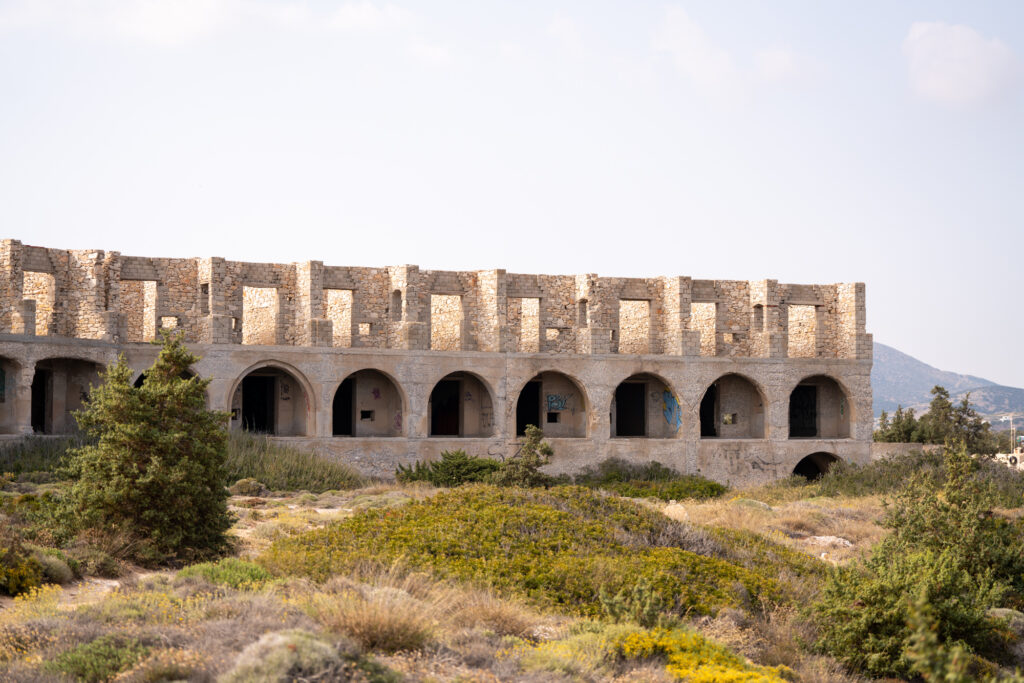
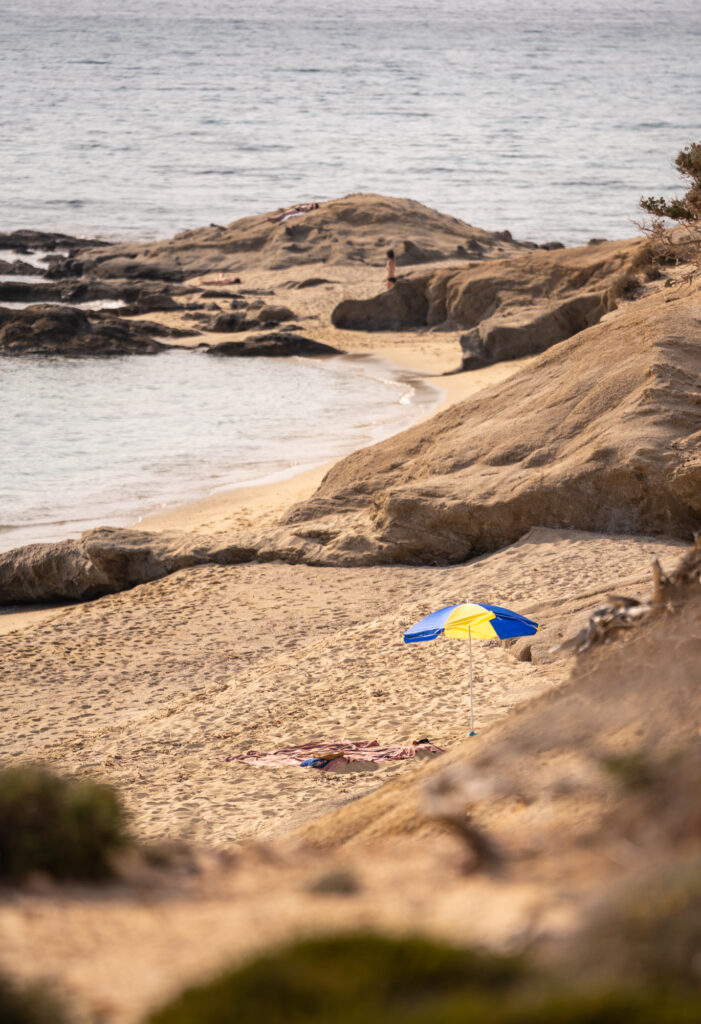

Bring a set of binoculars or a camera and try to spot wild hares and resident birdlife, then meander along walking trails before stopping to relax on a beautiful beach (Hawaii beach was my favourite!) with a picnic lunch.
An abandoned hotel lies at the edge of the forest, sprayed with colourful street art scenes. It’s another interesting space to visit and showcases the work of local creatives.
Learn About Olive Oil at Eggares Olive Press Museum
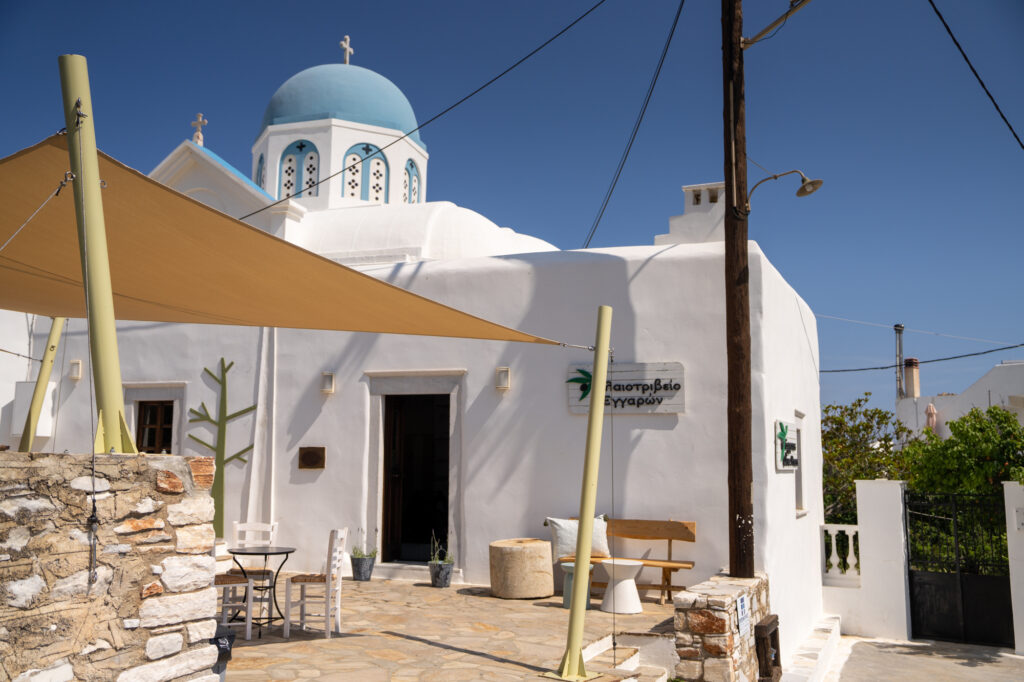
Eggares Olive Press Museum is a fascinating visit for anyone interested in learning about the health benefits and production process of olive oil.
The Eggares Olive Press was used in the late 1800s to press locally grown olives for villagers. Today, the exhibition, set inside a traditional white Cycladic house, features the same production instruments, plus, there’s a free tour and presentation to show how olive oil was produced back in the early days.
After the demonstration and a look around the small museum, head out to the terrace to enjoy tastings and canapes including olive bread, cookies and cake.
Visit the Fishing Village of Apollonas
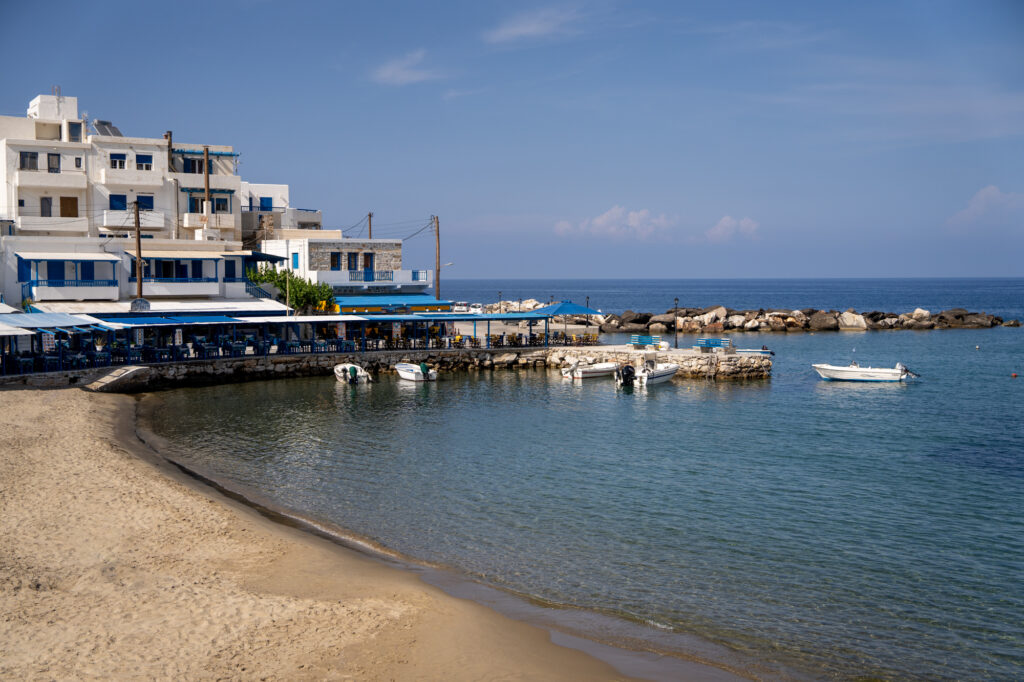
Apollonas is one of the most delightful waterside locations, and one of the most photogenic in all of Naxos island Greece. With a small sandy beach – named after the Greek God Apollo, it was once a thriving port for exporting Naxian marble.
Today, it’s a peaceful enclave in the north of the island. A place where Cycladic houses shimmy down to the shoreline, and the backdrop is lush and green, punctuated with trees and shrubs. Nearby, the Kouros of Apollonas lies – the largest marble statue on the island dating back to the 6th century B.C.
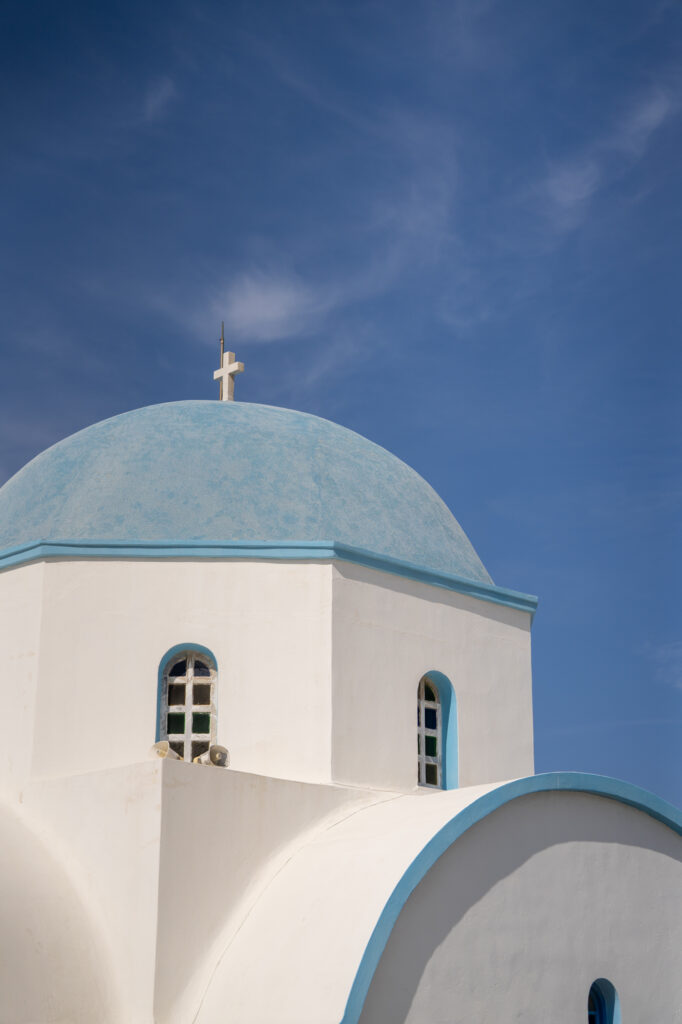
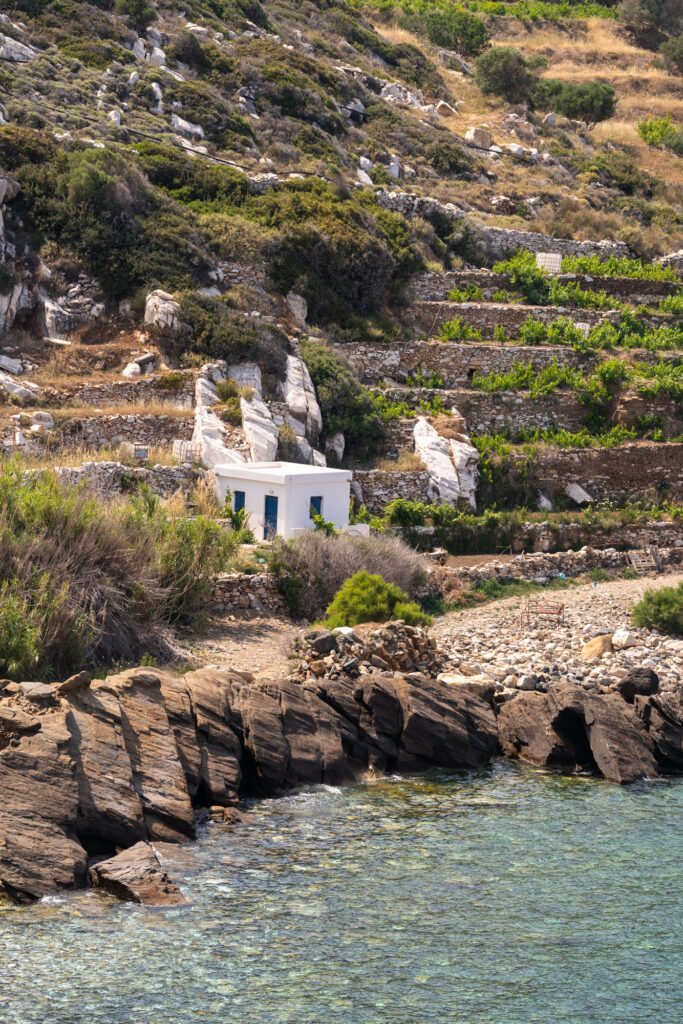
Each year in late June, the annual Fisherman’s Festival takes place in Apollonas and islanders flock here, but at any other time, the harbourside village is just a delightful place to sit in a café or taverna and watch the world go by.
See the Marble Village of Apeiranthos
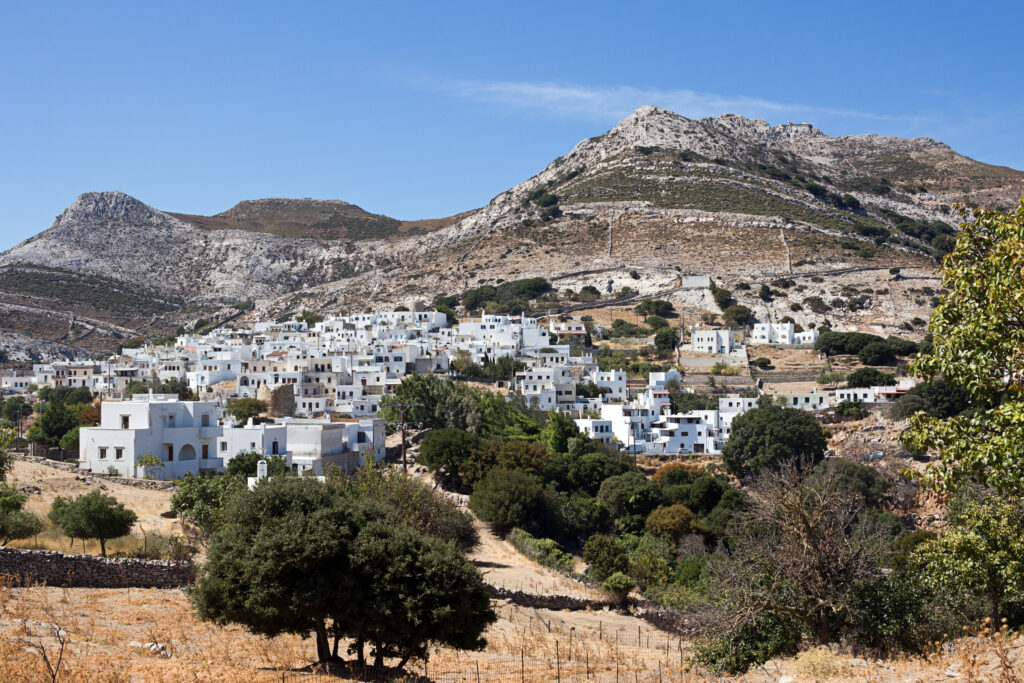
Step back in time to a village with quaint squares and artisan craft shops, located on the slopes of Mount Fanari.
Apeiranthos is a jewel of the island, constructed primarily from Naxian marble and offers outstanding views of surrounding peaks and verdant valleys filled with fig trees.
A network of paved lanes traverses the village, each one peppered with ceramic, craft shops and charming tavernas where visitors can dine alfresco on Moussaka, mezze and salads.
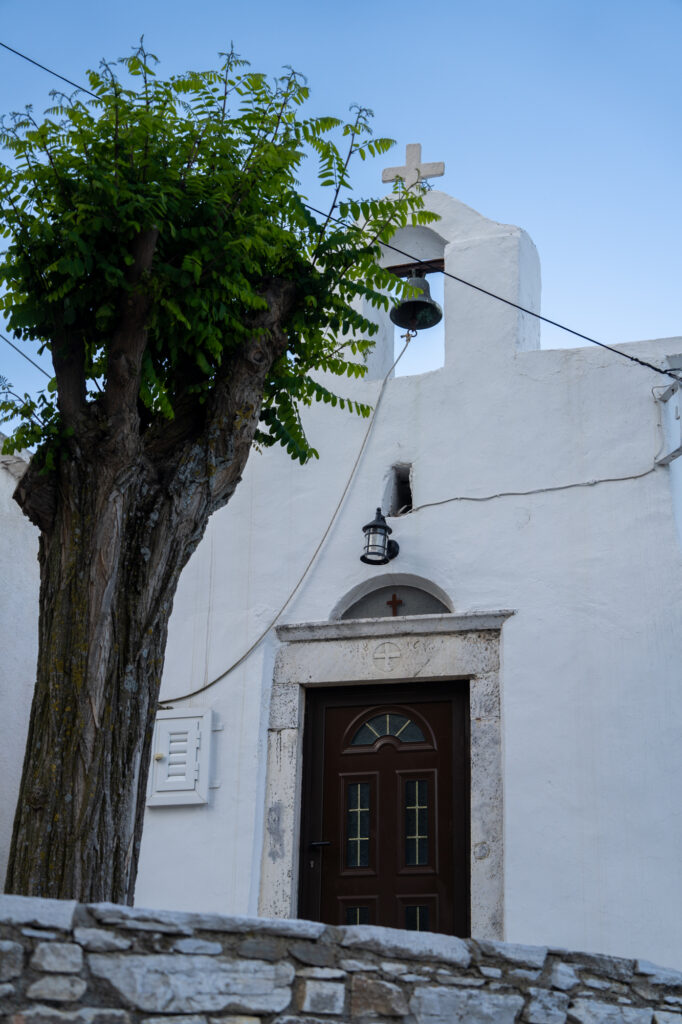
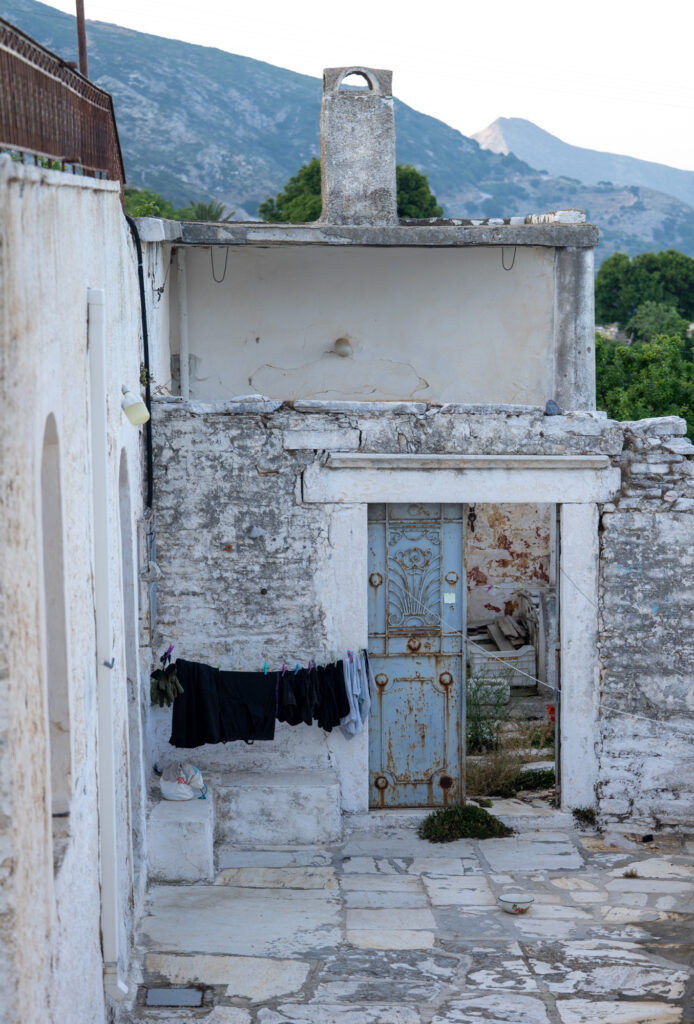
There are five museums to explore in Apeiranthos, including a Visual Arts, Natural History, Folklore and Geology Museum, but perhaps the most interesting is the building dedicated to archaeology. It houses over 2000 exhibits, offering unique access and insight into the heritage and culture of Naxos spanning centuries.
Learn to Kite Surf
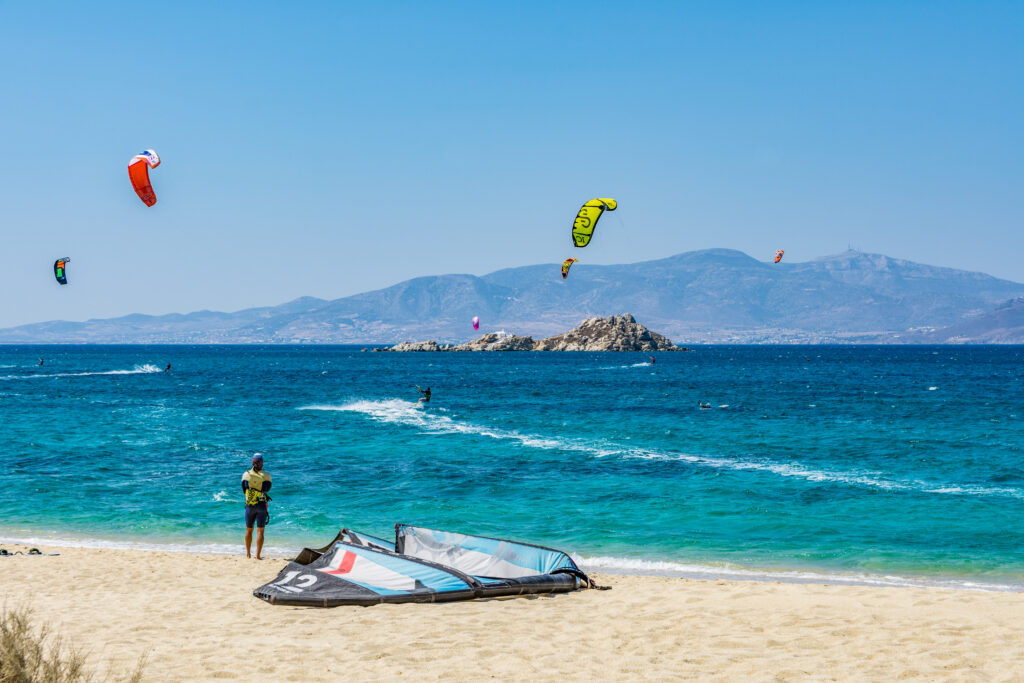
If you’ve ever fancied learning a new skill while on holiday, take to the waves with a kitesurfing lesson at Mikri Vigla Beach. As a beginner, you’ll learn about wind strength and direction, set up the kite and lay out the lines (so your kite doesn’t tangle) before setting up for launch and taking to the water.
This area is a great place to learn with 200+ windy days each year, plus, you’ll be guided by a professionally trained instructor who caters to all levels of expertise.
The schools at Mikri Vigla Beach are open between April and November and some also offer windsurfing and foiling – a similar experience with a smaller kite. If visiting in winter months, some schools can open on request.
Enjoy Tastings at a Local Winery
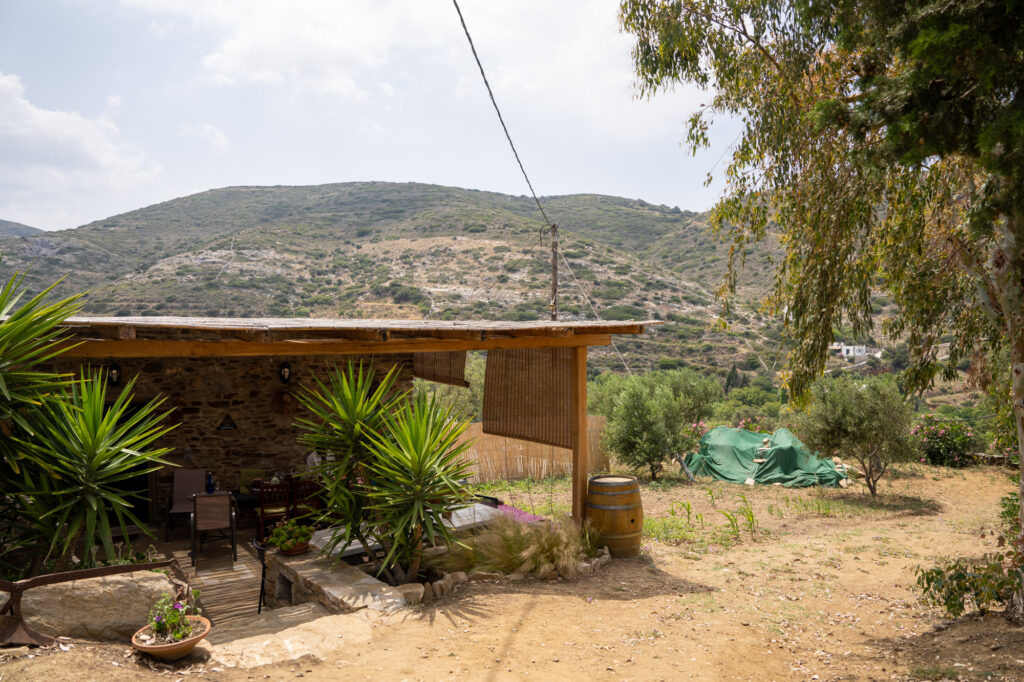
Unlike many other Greek islands, there’s only one small winery on Naxos which goes by the name of Saint Anna. It’s a short drive (5 minutes) from Naxos Town, tucked away in the hillside surrounded by rustic rolling hills.
Tours are available, and the owner is passionate about his wines and winemaking process, which shows as he leads you on a tasting journey. Visitors will learn of the estate’s history and development throughout the years.
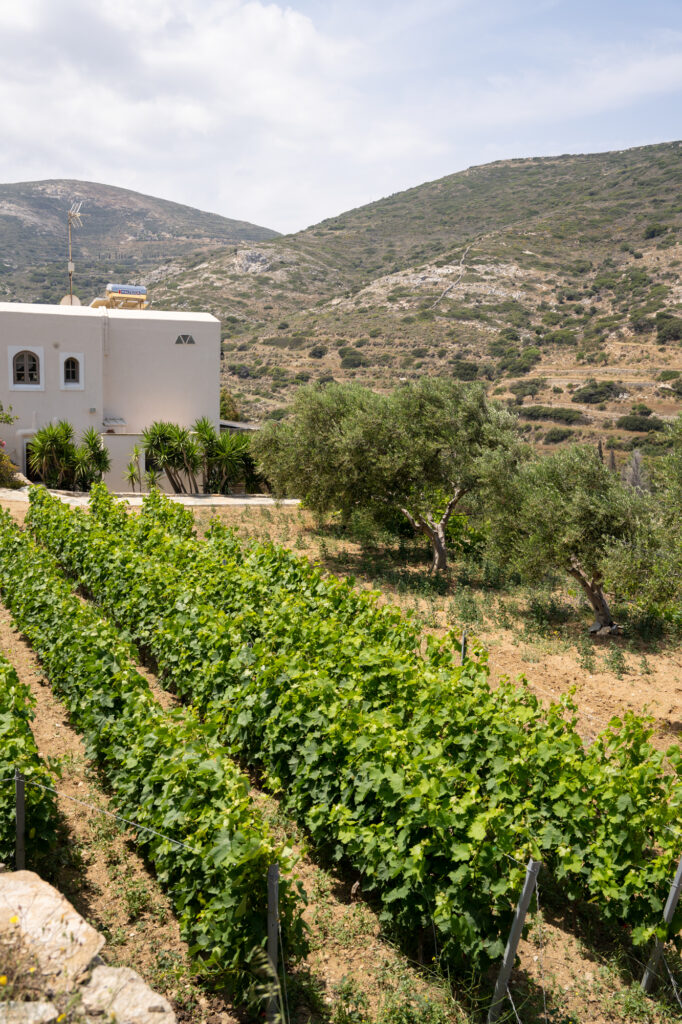
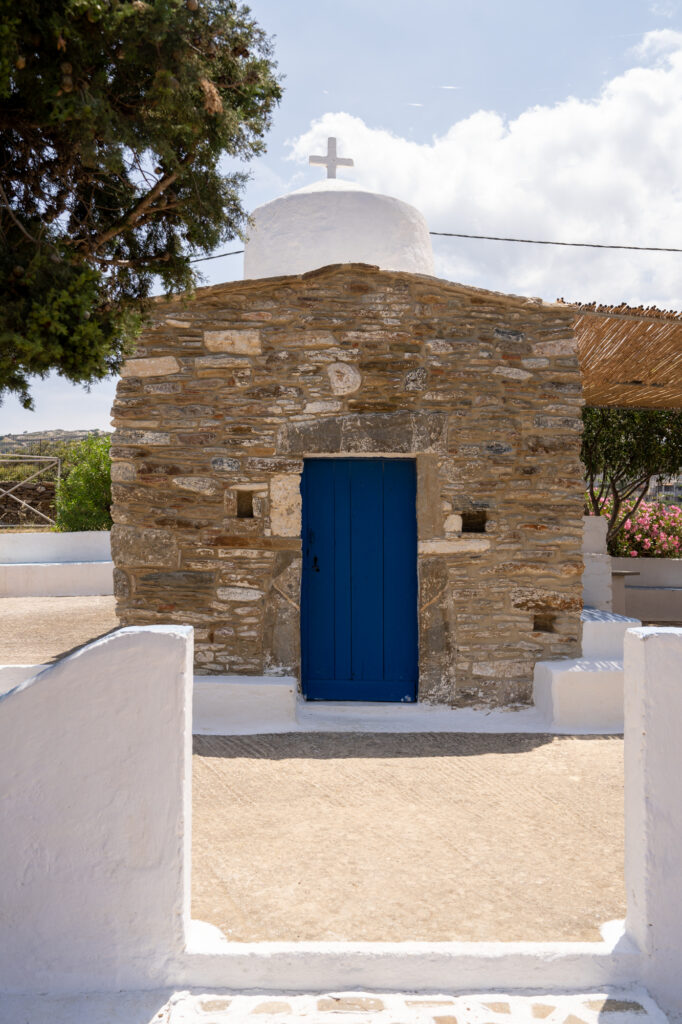
Seek out the chapel on the property, Chapel Saint Anna – from which the winery takes its name – and enjoy authentic and homegrown tasting platters to go with your wines, on the terrace overlooking vines and vegetable gardens. It’s the perfect excursion to take in the afternoon, and to experience the best of the island.
The Santa Anna winery produces a variety of dry and semi-sweet white and red wines, a rose and homemade liqueur, which can all be purchased on-site, alongside some of the finest olive oil you’ll find in Greece. Book your tour here.
Take an Authentic Greek Cooking Class
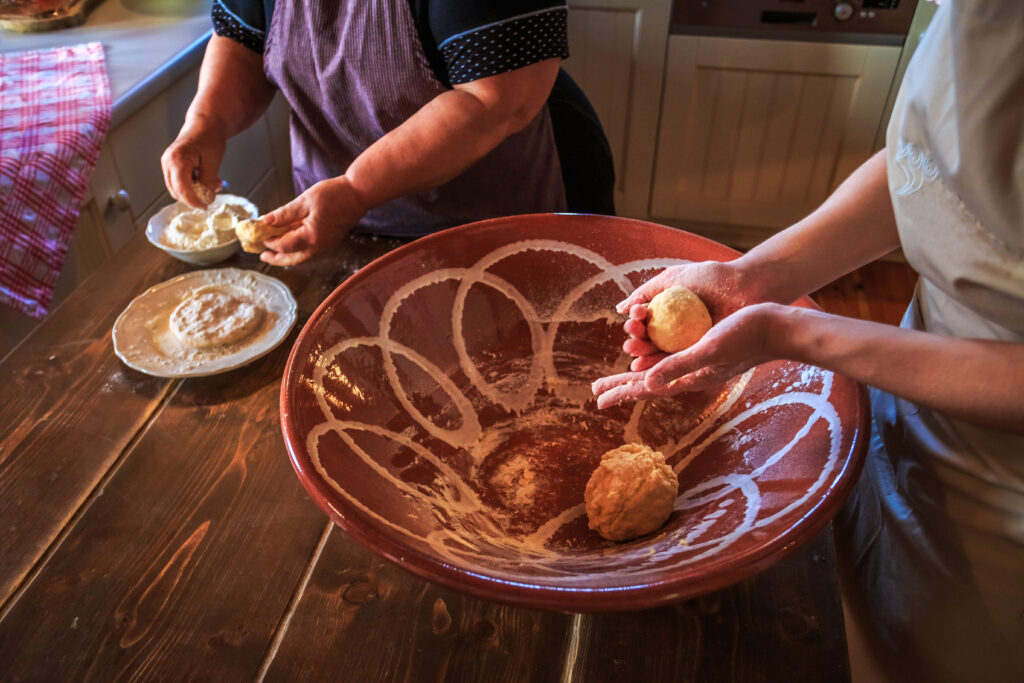
Ever wondered how Greek food always tastes so good and so fresh? Sign up for a fun cooking class in a Naxos village and delve deep into the stories and ingredients behind your favourite recipes.
During these hands-on cooking classes, you’ll discover the health benefits and different herbs and spices used in Mediterranean cuisine.
Participants will help to procure ingredients from village gardens and along the riverbank, plus, you’ll visit a local producer and learn all about the cheese-making process before returning to prepare your meal.
Once complete, sit down to enjoy your delicious creation with newfound friends while listening to the uplifting melodies of traditional Greek music.
Getting to Naxos
Naxos has a domestic airport that is serviced by three airlines. The main route is to Athens, but you can also find direct flights to Syros, Crete, and Astyplalaia.
However, the most common way to reach Naxos is via ferry. I recommend using Ferryhopper to search for, and book ferries between the Greek Islands. It makes the process very easy and you can even track your incoming ferry on the day of departure.
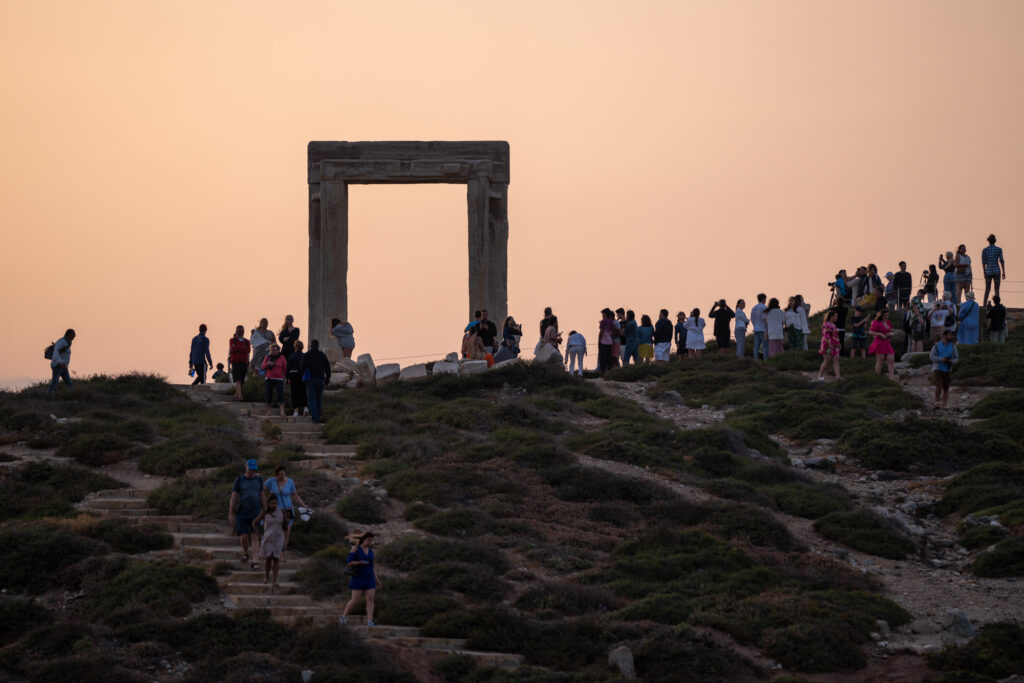
Getting Around Naxos
I highly recommend hiring a car while visiting Naxos. There is so much to see and do, you won’t want to be restricted to public transport, or your own two legs.
That said, opt for something small to navigate the sometimes narrow roads. Overall, I found driving in Naxos to be fairly easy and uneventful compared to some other, less developed islands (I’m looking at you, Milos!).
Compare and choose your rental car here. Most of the rental car companies have an office near Naxos Port, or they’ll arrange to meet you there (or from the airport).
When to Visit Naxos
Like with all popular destinations, if you want to avoid crowds, the usual advice is to avoid July & August. However, there’s another reason you may want to avoid these months for visiting Naxos, and that’s the Meltemi winds. These Northerly winds can ruin any beach day or sailing trip, and they’re typically at their peak during summer.
I’d therefore suggest visiting in late Spring (keeping in mind the sea may still be a bit chilly), when you can enjoy the lovely bougainvillaea blooms at their best. Or early Autumn once the winds have died down, but the island is still enjoying balmy temperatures.
I visited in the first days of June and it was blissfully quiet on the island.
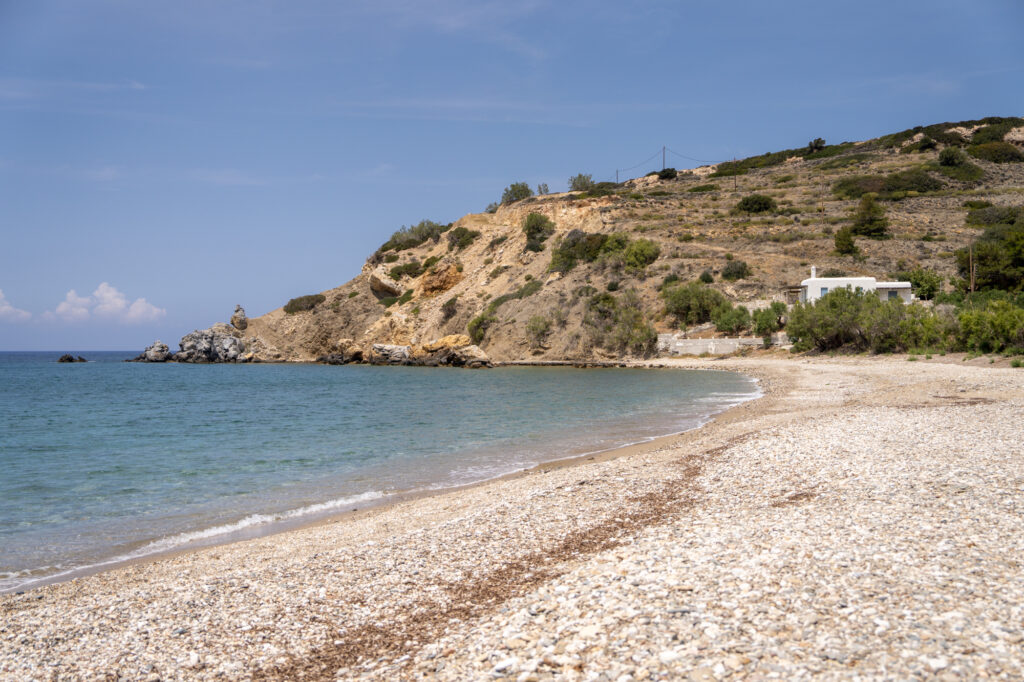
How Long to Spend on Naxos
As you can see above, there’s quite a lot to see in Naxos! Enough to keep you busy for a week or more. However, I’m guessing that like most, you’ll be wanting to see one or two other islands on your trip to Greece (I can recommend Paros and Milos!), so this may not be possible.
At a minimum, stay 4 nights to be able to see some of the top sights, while still leaving enough room to lounge and relax on a sandy shore.
These are a handful of the most enticing sites and activities available for travellers on this beautiful, unspoilt Cycladic island. From kitesurfing to mountain hikes, and wine tasting to visiting museums, Naxos is an island that offers something for everyone.

